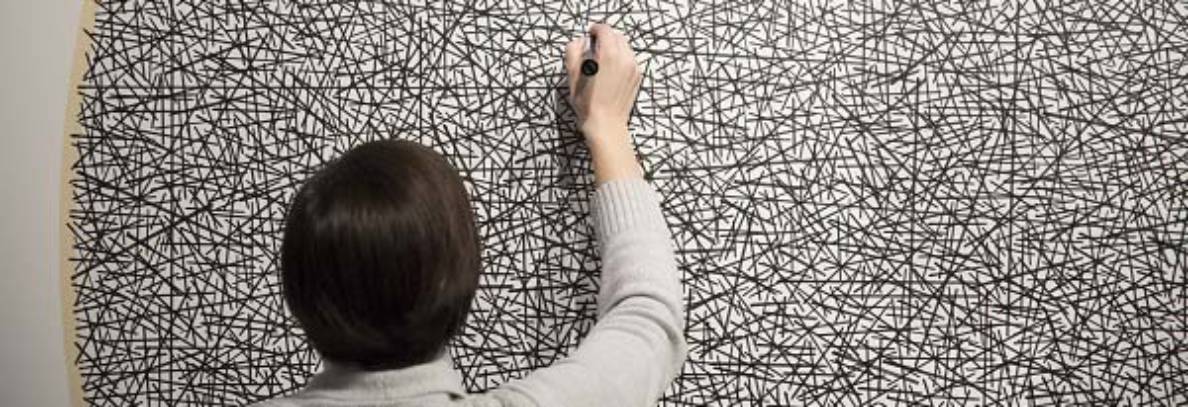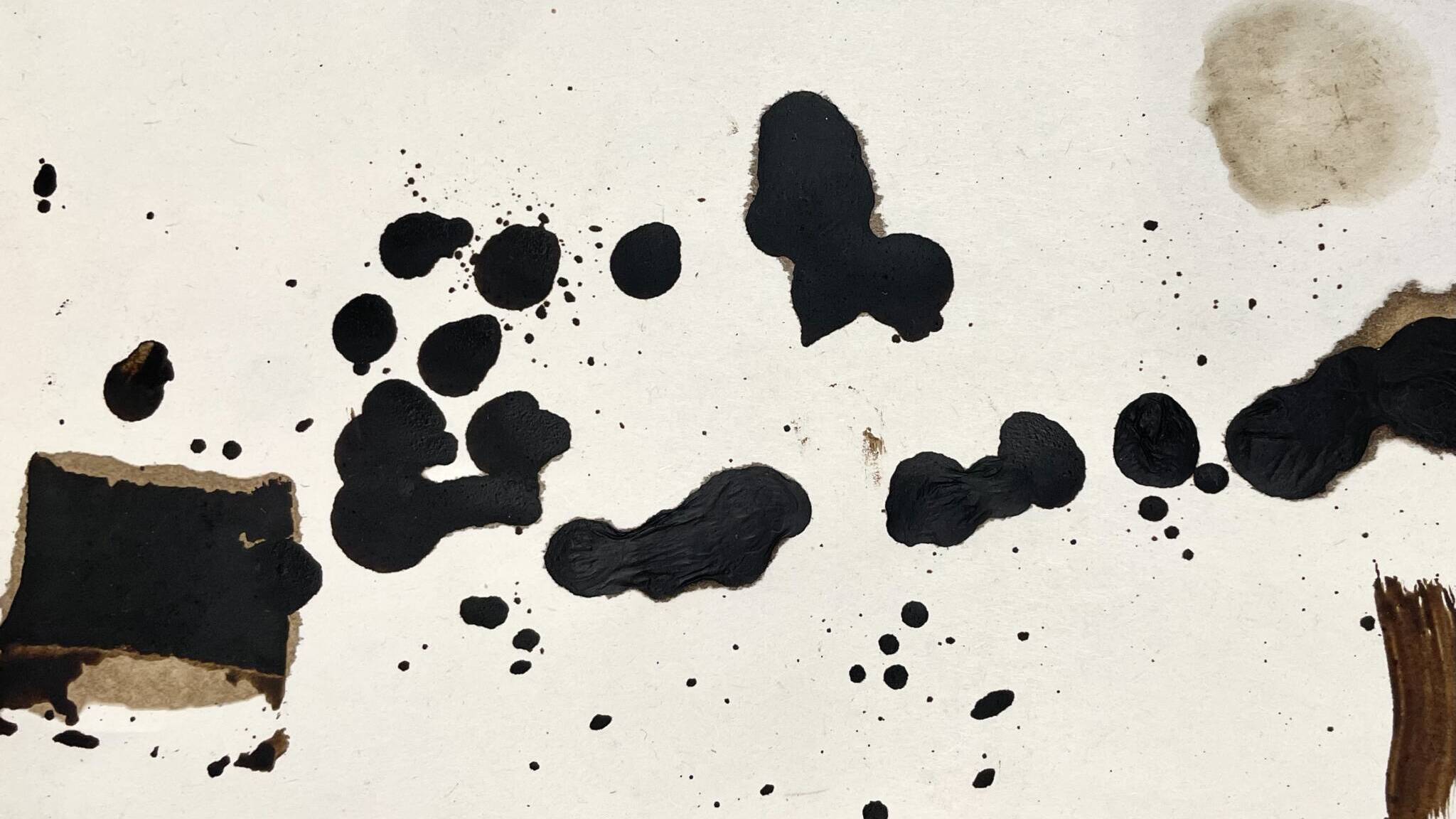
Squinting Buttons
I created 13 squinting buttons. I originally made 15, however, one button’s mylar did not work so I had to take it off and another button had a strange white circle around the image (Pictured below on the left). The first time I printed out the images, I felt as though the pictures were still too big so I decided to go back to the computer and make the images even smaller (Pictured below in the middle and on the left). Unfortunately, within the black parts of my buttons there are faint lines, which Nathan said was because the printer needed to be serviced. Although I think the buttons would have looked better without these lines, McKenna mentioned it kinda looks like blinds on a window which is in theme with my concept of looking. Overall, I am very pleased with how these turned out and think they look quite ridiculous paired with all my “normal” buttons.
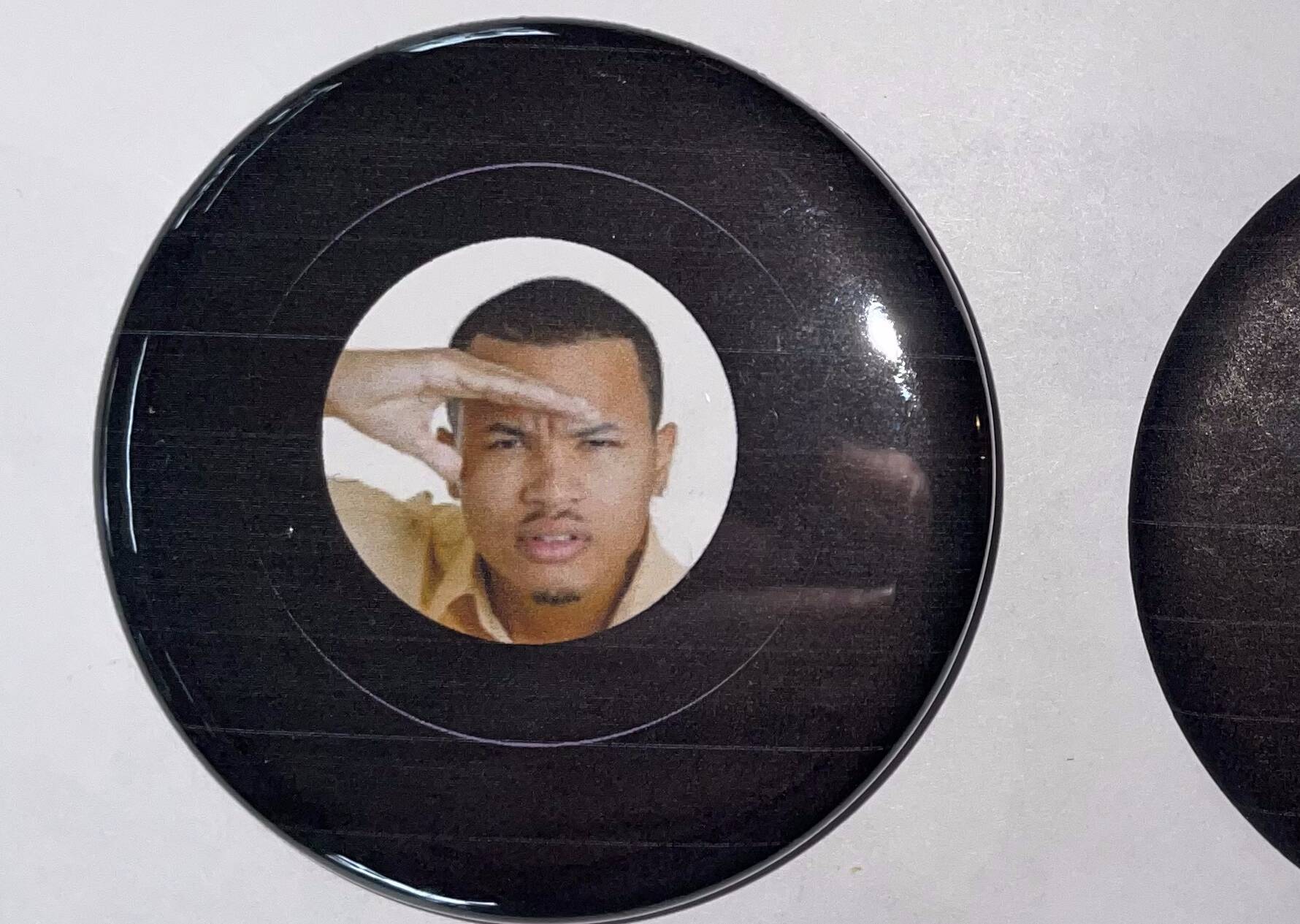

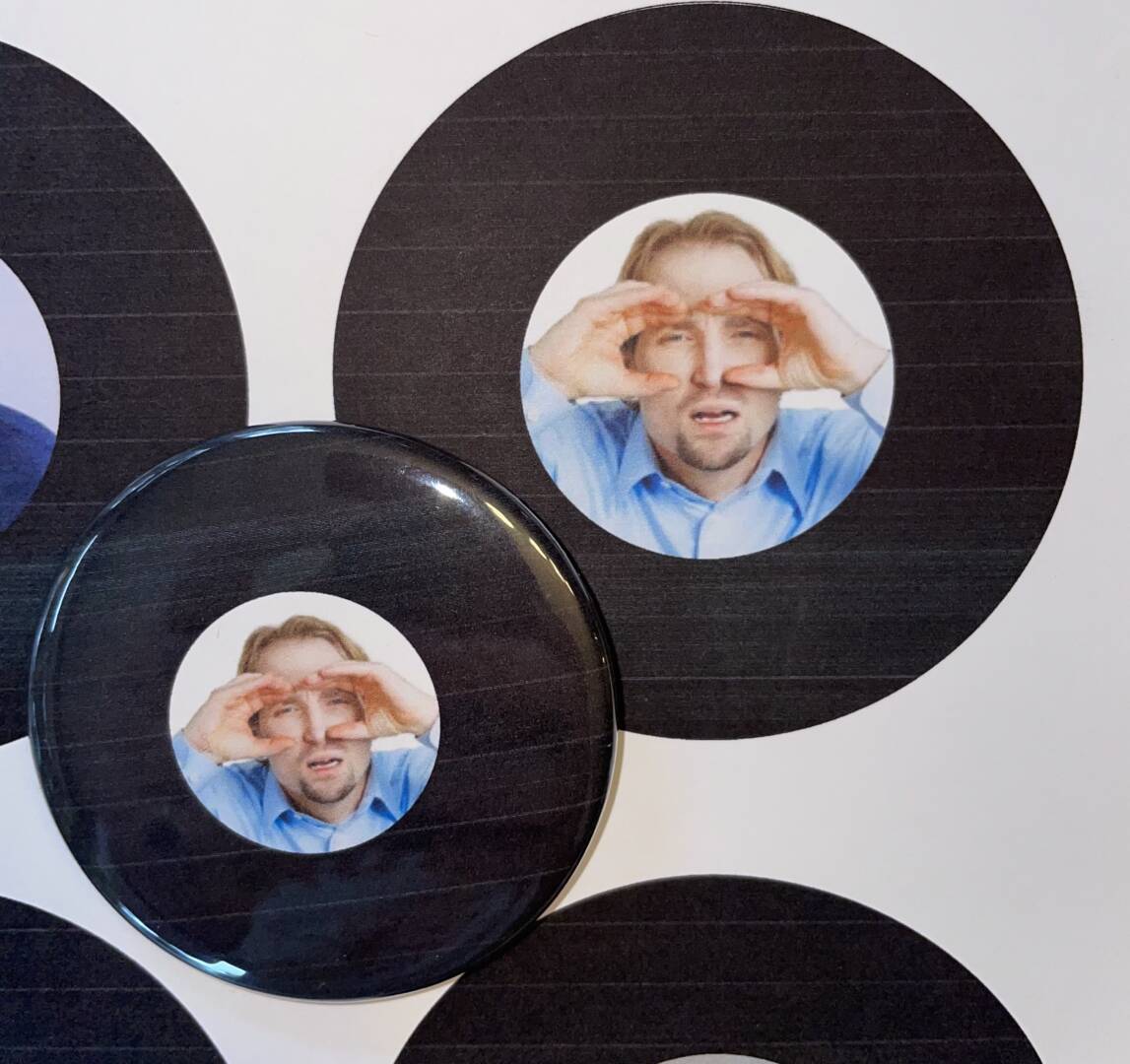
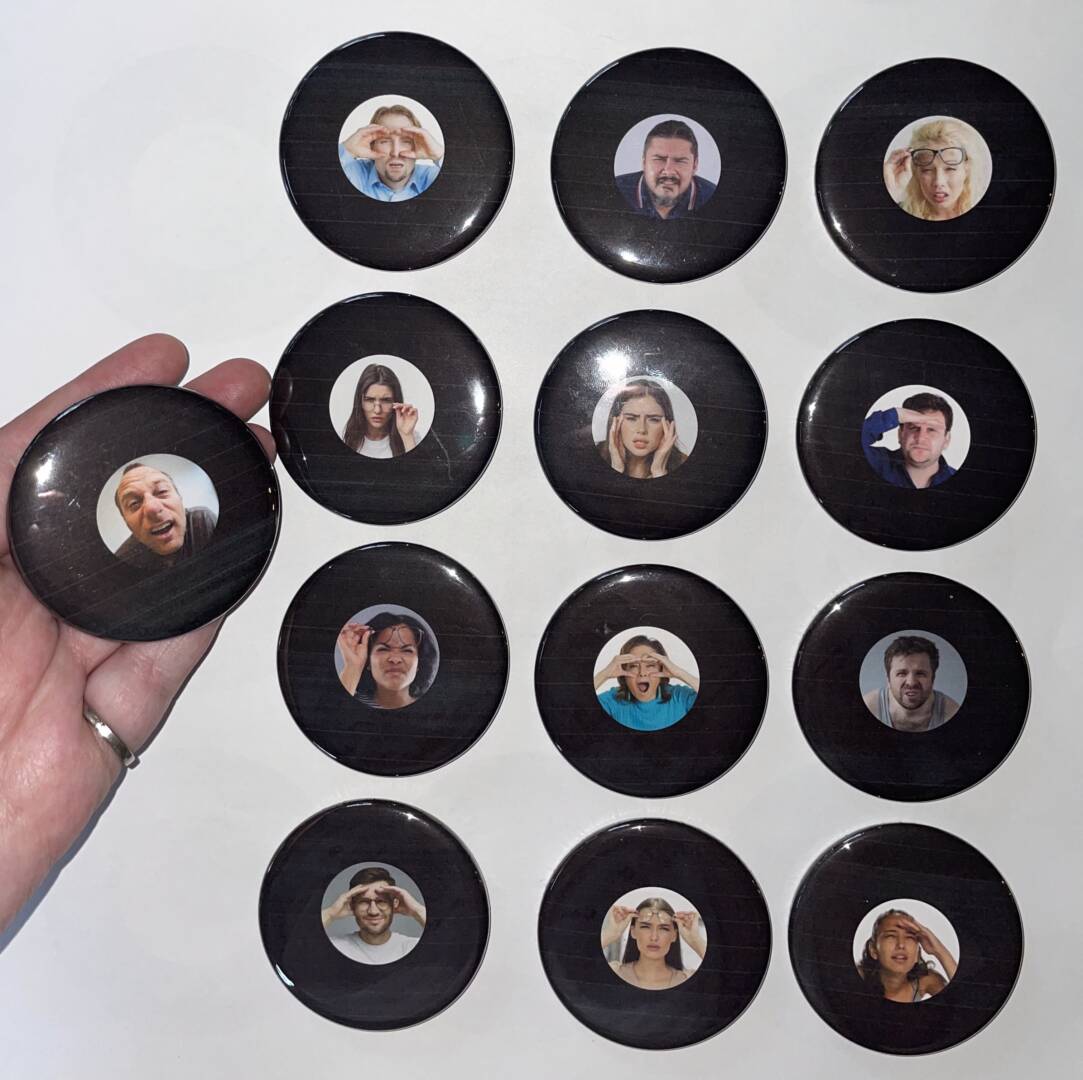
Artist Blurb:
Whenever I see buttons on someone’s bag, I always try to sneak a peak when they aren’t paying attention… I judge them on the buttons they have and determine if I think we would get along based on common interests or if I think I should avoid them… Therefore, I created buttons that not only look back at you, but also judge the looker for looking. I made the images smaller than the buttons themselves so the person taking a peak at them REALLY has to get in close and squint their eyes to see the person squinting back at them!
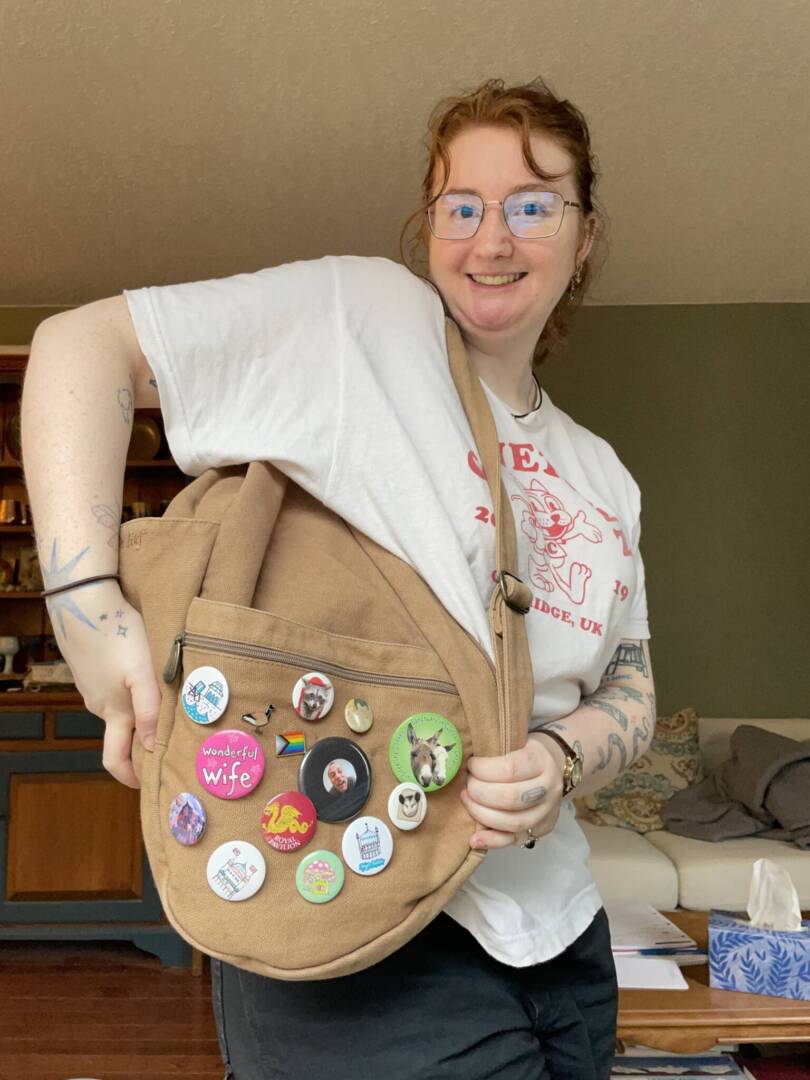

PORTRAIT PROJECT
IMPORTANT: I was very passionate about two concepts, one a portrait of my Opa and one a self portrait… so I did them both!!! The one I am handing in to be graded is Portrait of Hank but please check out my self portrait entitled no two snowflakes as well if you are interested!
BRAINSTORM



ICE SCULPTING AND VIDEO BTS
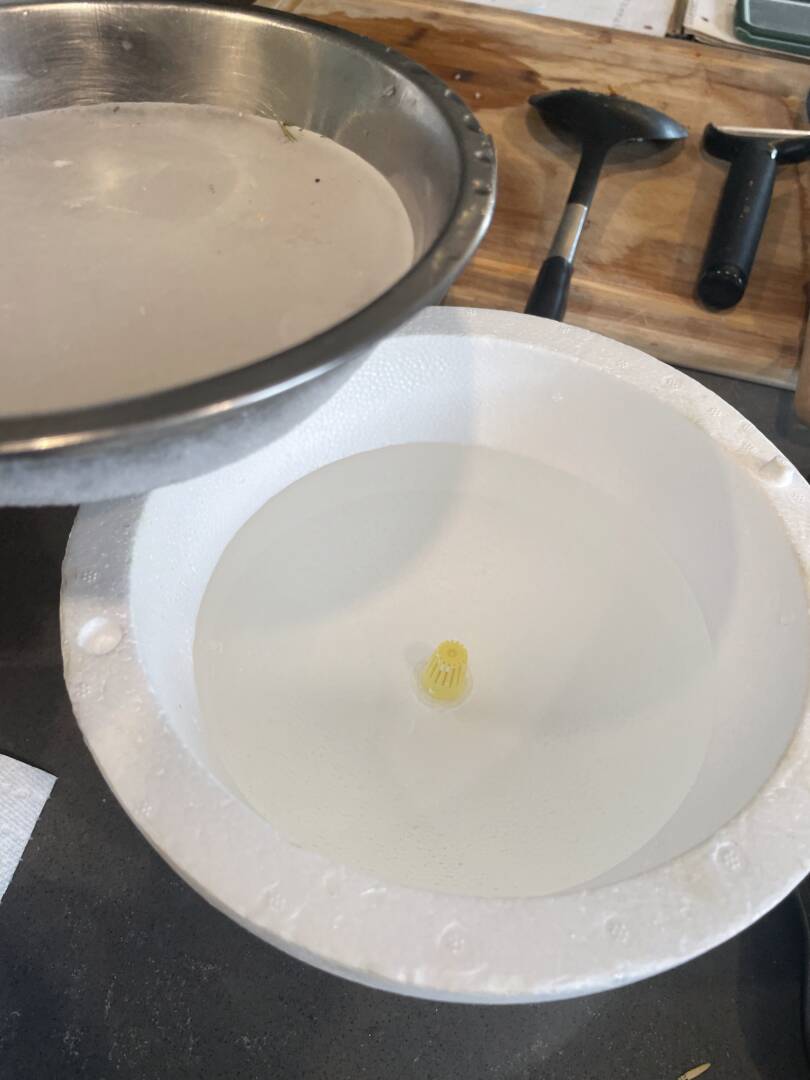


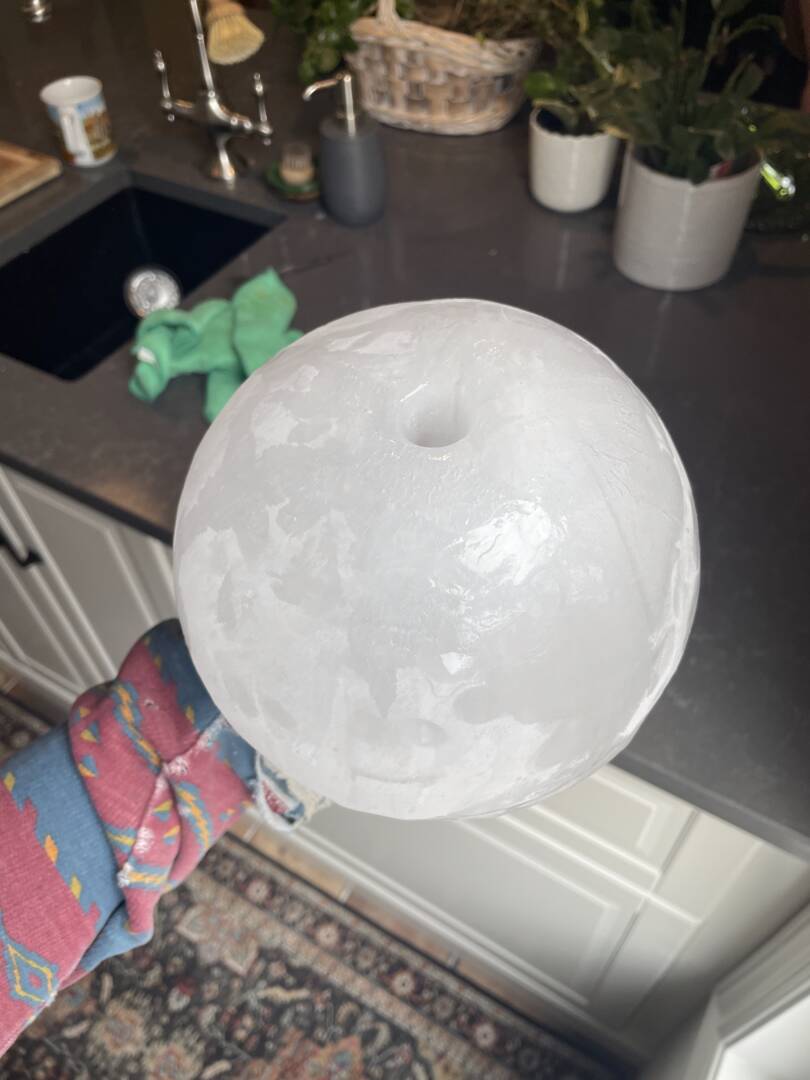
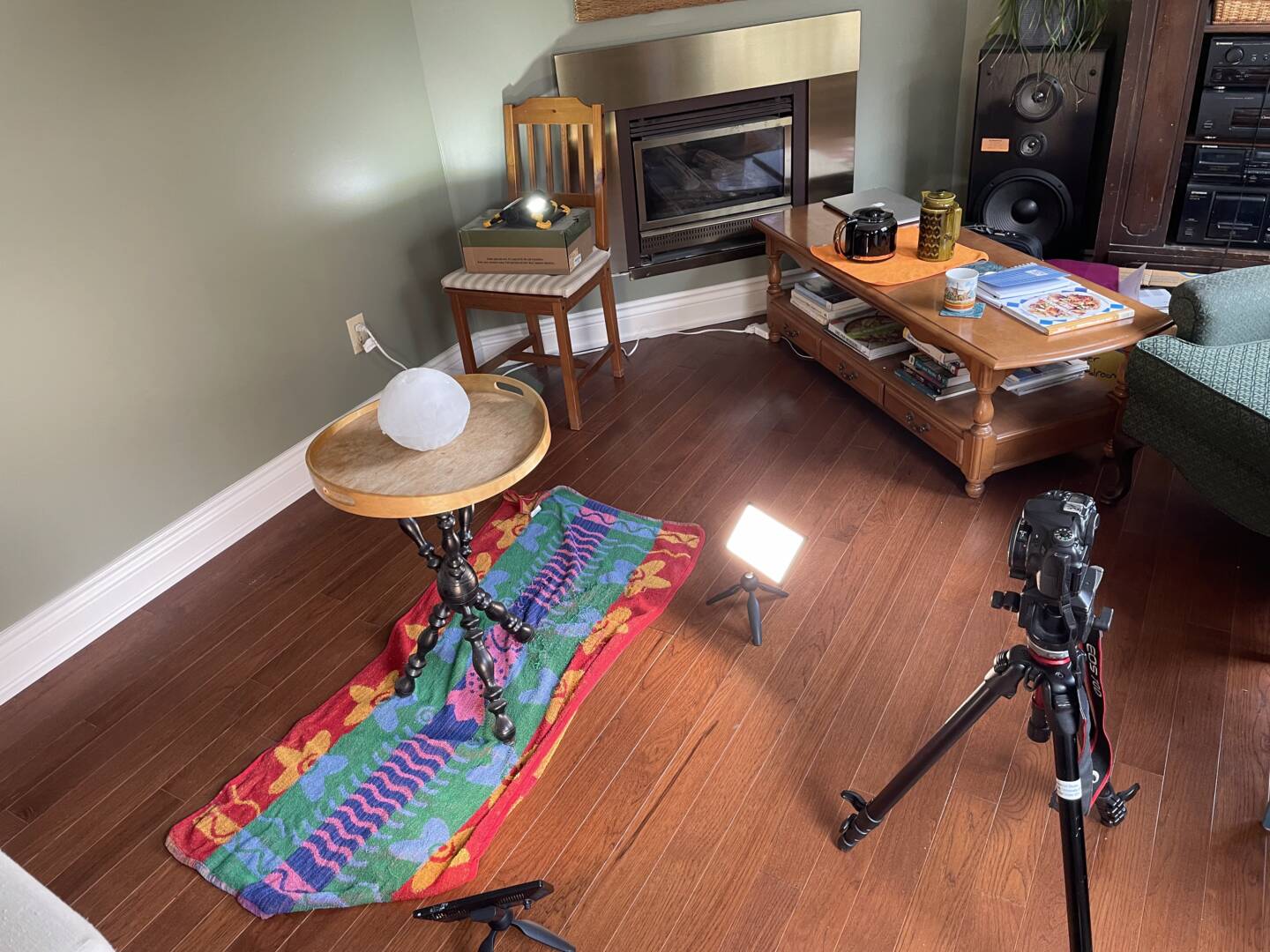
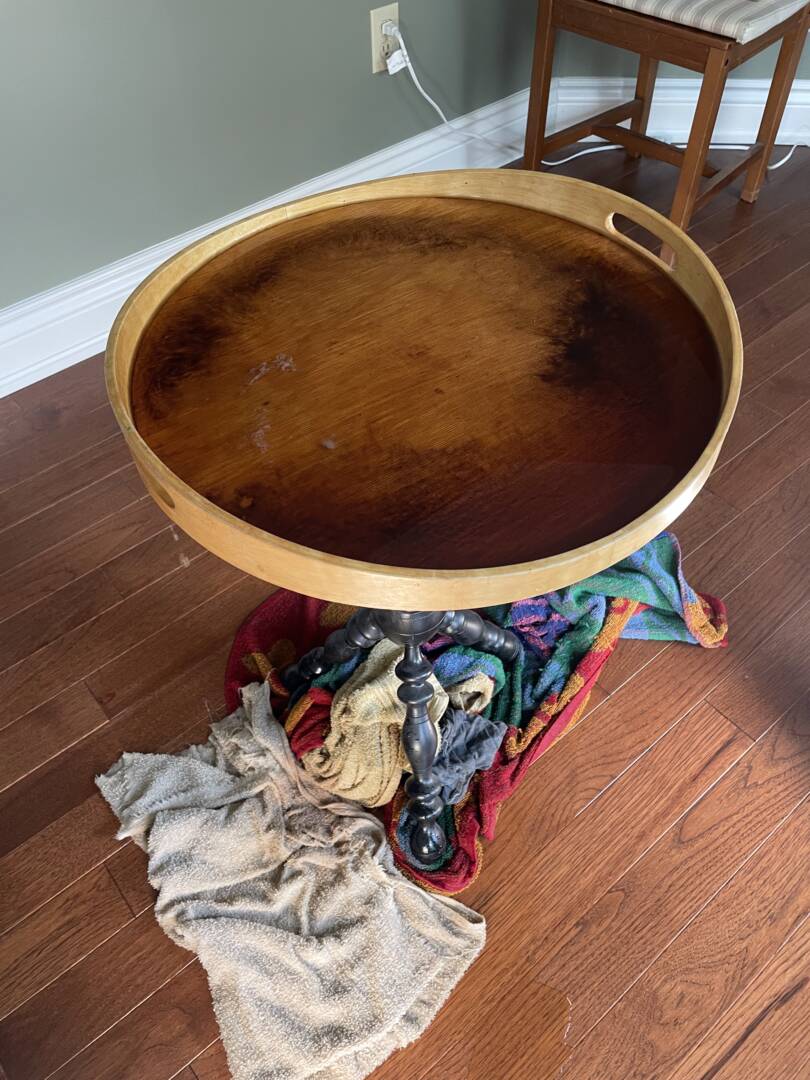
Portrait of Hank
Portrait of Hank Artist Blurb:
I made a sculptural and video art piece that speaks of the deterioration of the human body. As with all of us, age causes our bodies to change and break down slowly but in the case of my Opa, his body was deteriorating faster than normal due to symptoms from his cancer. I was heavily inspired by Portrait of Ross by Felix Gonzalez-Torres as my piece also speaks about gradual and unexpected loss. Where Felix uses candy, I use melting ice to create a type of vanishing portrait. Originally I had hoped this video would be in one shot but the ice sphere, a metaphorical body of my Opa, persisted and lasted 30 minutes! The video is quite frantic at the beginning as I edited together clips of me pouring the drinks, however, the last minute of the video is a singular clip which gives viewers a chance to reflect. In the moment I felt very strongly about eating the last little piece of ice as a way to not say goodbye to my Opa and to have him reside within me, however, looking back at the video I wish I had filmed the melting to completion. I created a hollow sphere out of ice with a small hole at the top to pour orange pekoe tea and coffee into. The tea and coffee, the tray, and the mug are all significant as they were always used when my Opa would come over for a visit. My fondest memories, and my last time seeing him, was during a tea and coffee visit.
Timelapse!
no two snowflakes
I went through every item in my closet with pockets and determined that out of 42 clothing items, 23 had stuff in at least one of the pockets. Once counted, there was a total of 63 items, 42 of which were tissues. I took all 63 items and scanned them, however, I was very intrigued by the tissues specifically as they looked strangely beautiful. I was inspired by Lacy Greene’s Lipsticks and On Kawara’s One Million Years which document the subtly of objects or a singular concept. I created a booklet out of all the 42 scans of tissues and printed it out as a zine. Below is a link to an online version of the book for those who are interested!
Link to no two snowflakes: https://uoguelphca-my.sharepoint.com/:b:/g/personal/lvanhuis_uoguelph_ca/EQ3OT76uSMhJoAj_HljFMwkBCechB7VsEvvb-_R3prCPEQ?e=NmZ2lC
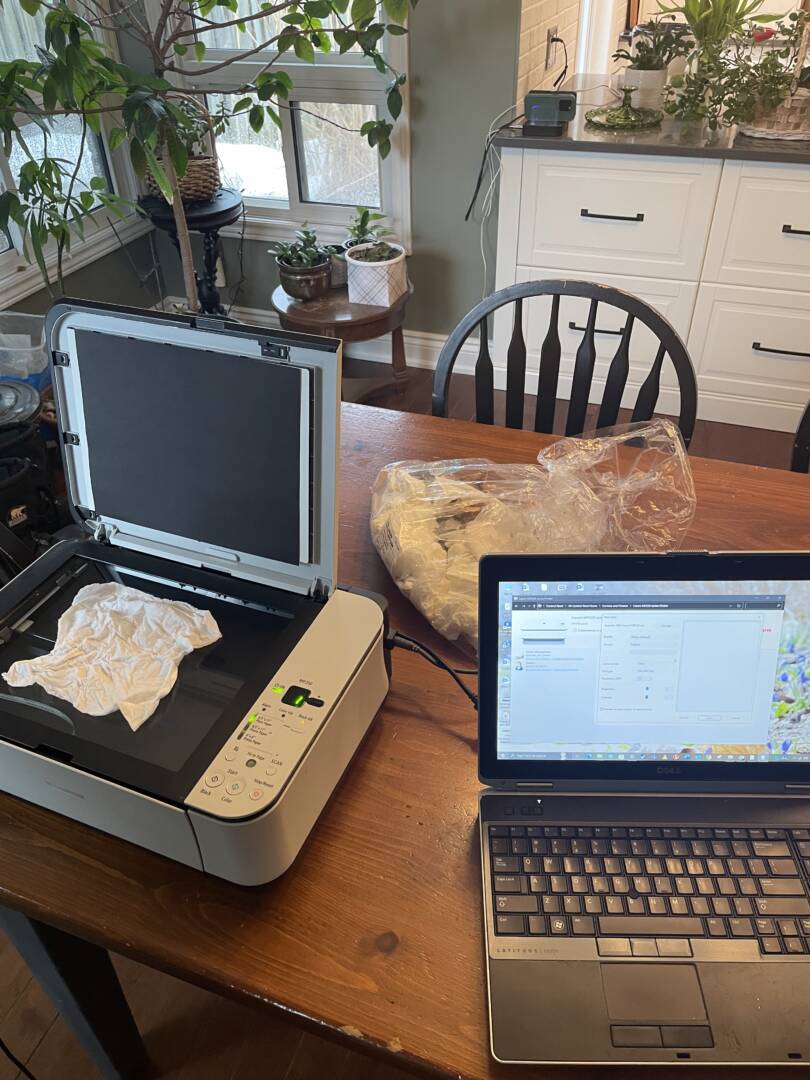


Open Gallery
Walking around the open galleries made me extremely excited about having my own space and I began thinking about what I would want to display! It was a little intimidating but also really cool learning about everyone’s specialties and niches.
I especially loved the whimsical mixed media and sculptural pieces by Elisa, it is exactly my kinda style and really inspired me 🙂 I also loved Cindy Hill’s bronze casted dairies. I found the material really interesting to look at so I asked her about her process, she told me she used a burnout casting method. Cindy mentioned wanting to make a piece about destroying personal documentation. Her use of bronze was significant because she noted most subjects casted in bronze are men on horses, thus she wanted to make a feminine art piece using this historically masculine material. She mentioned that there are more horse statues than statues of women in Canada! Additionally, I really liked a sketch by Vida Beyer for its simplicity and I enjoyed Wendy Bishop’s sound resonance pieces for their thoughtful and mathematical arrangements of colour.
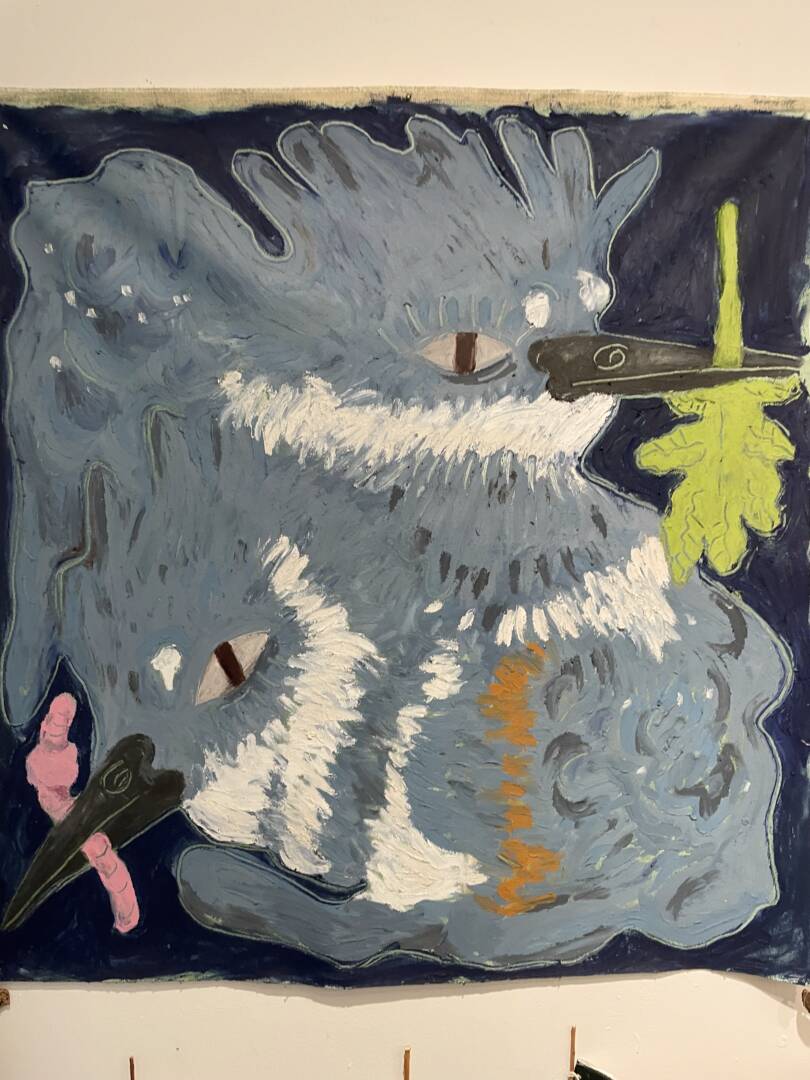
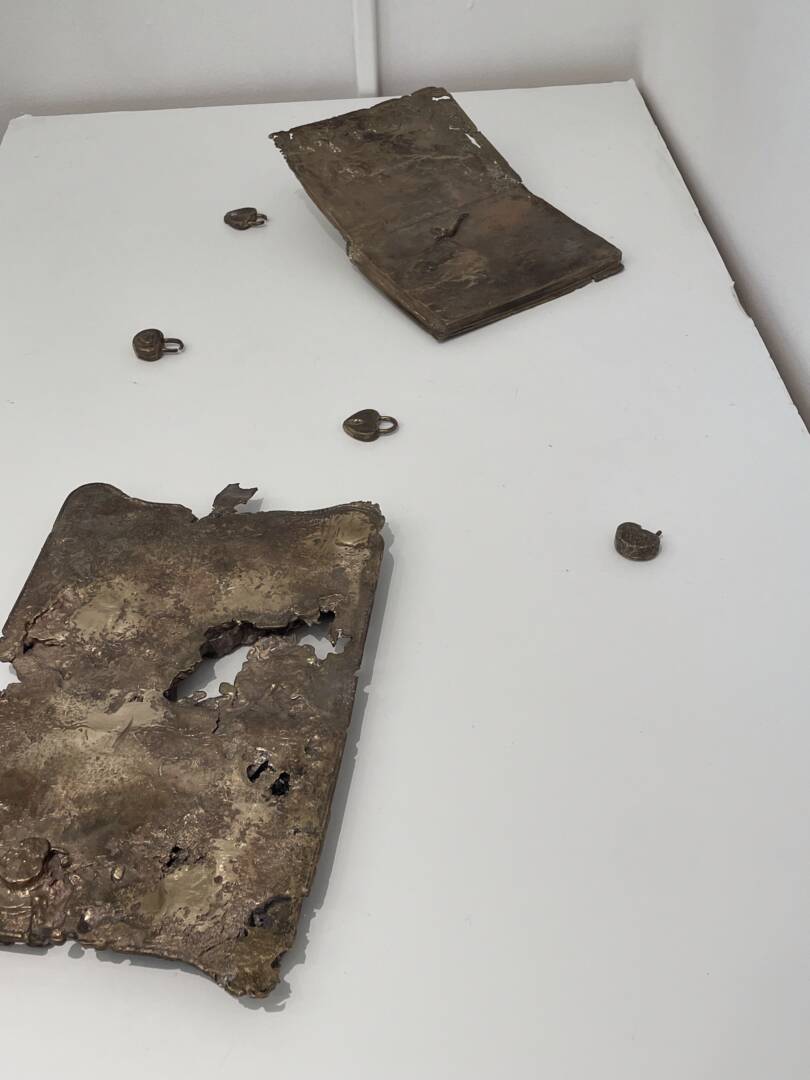
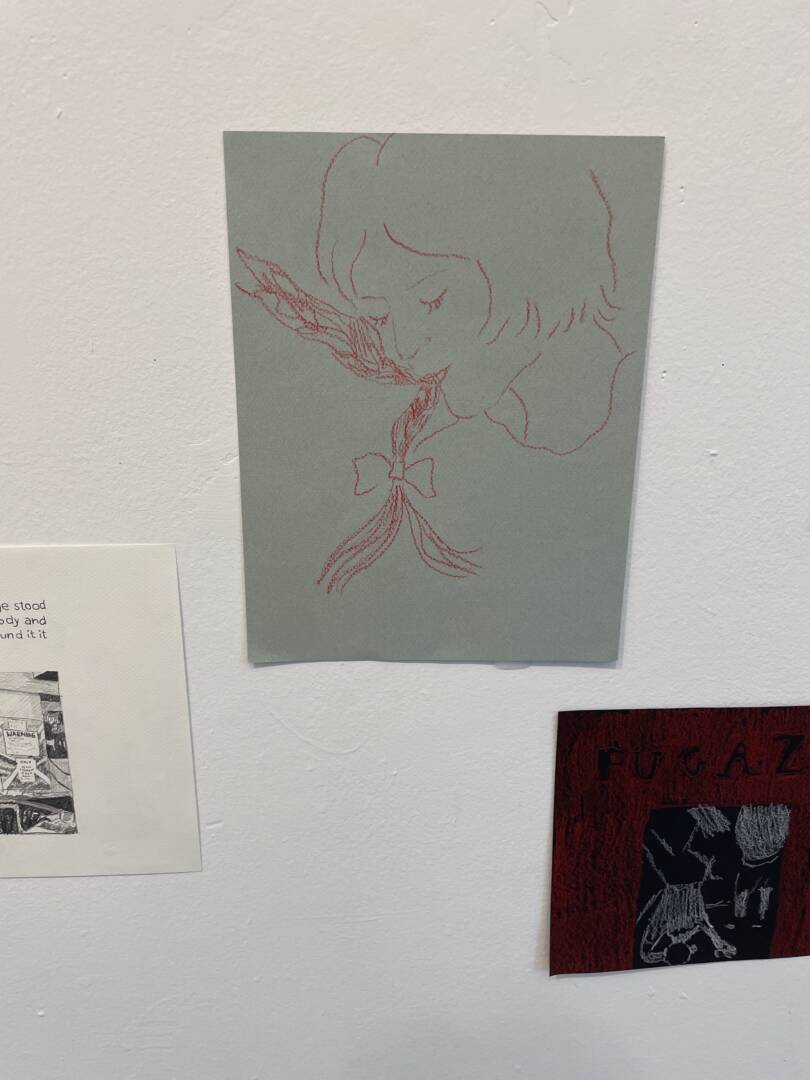
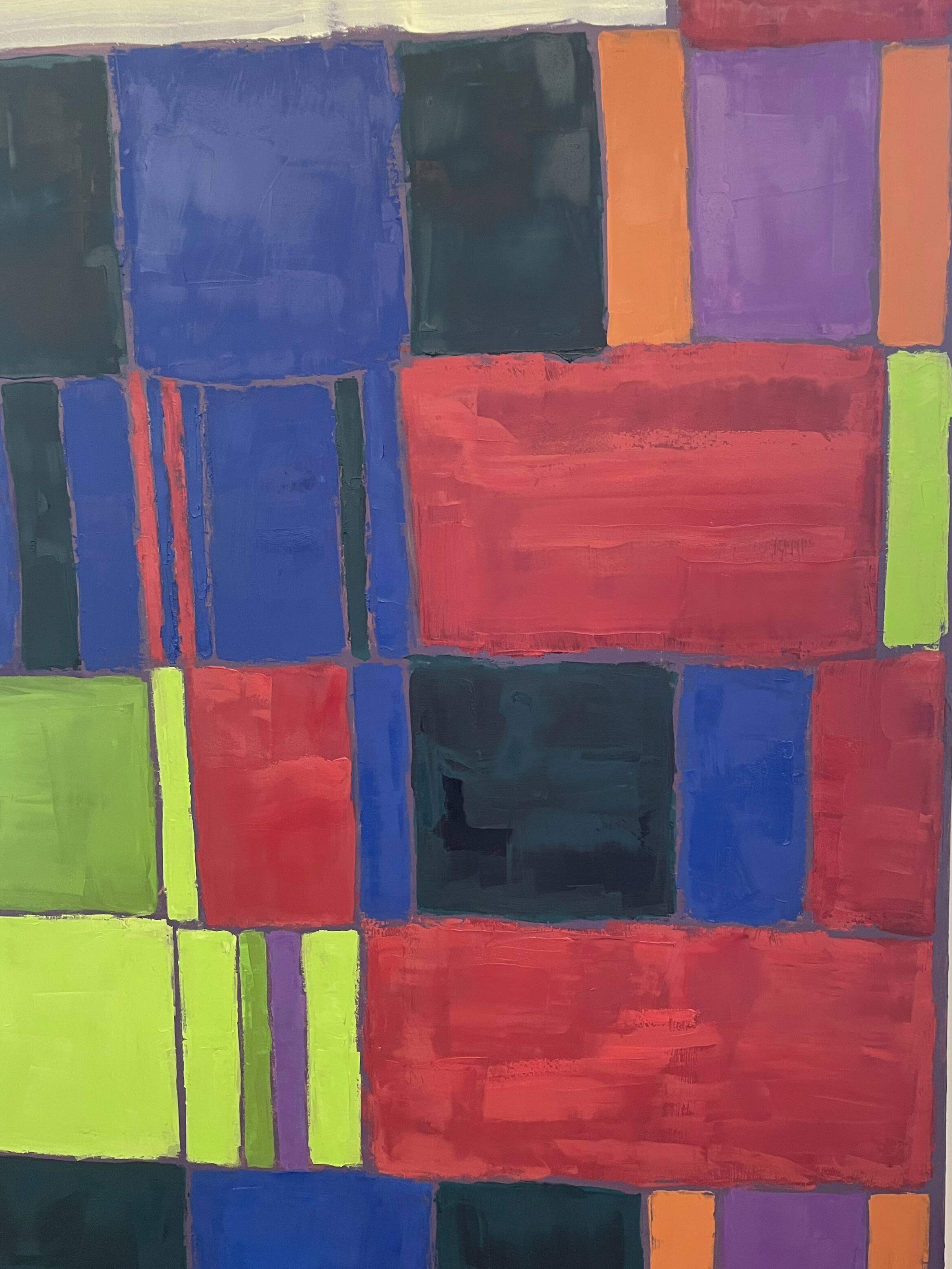
I have included some other pieces that really intrigued me! Overall, I’m glad I took the time to look and listen to the upper years and I am looking forward to displaying my own art 🙂
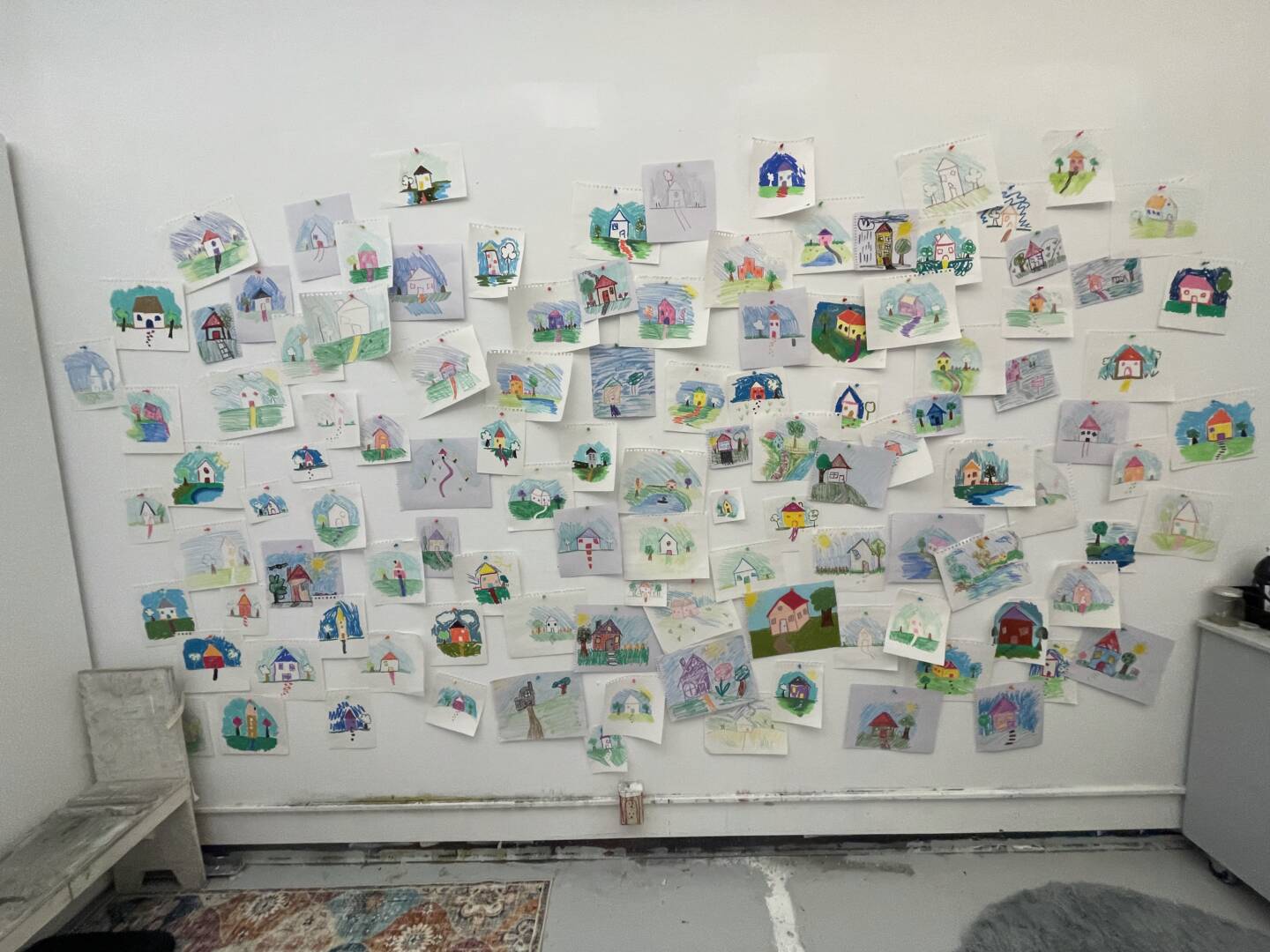
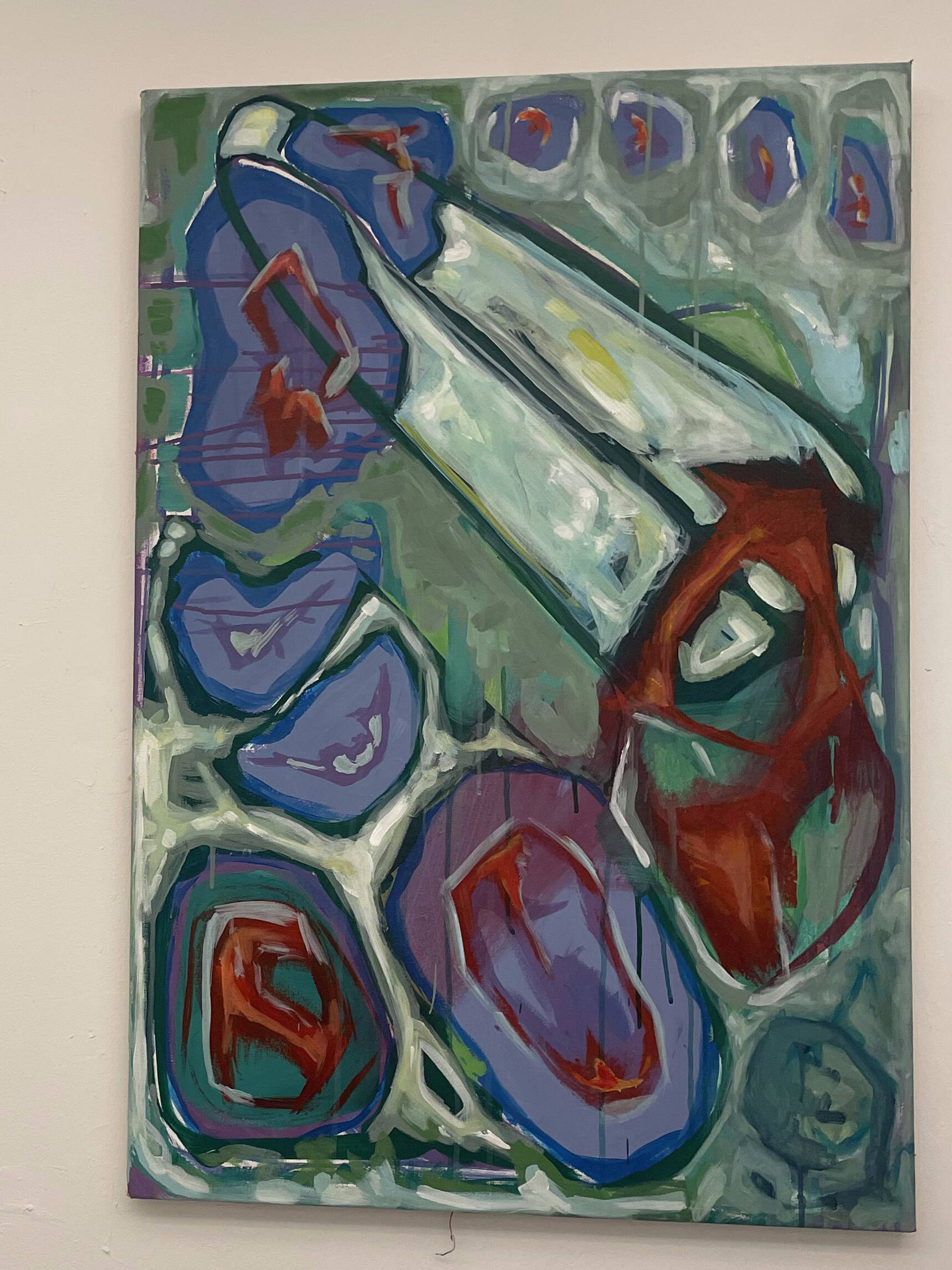
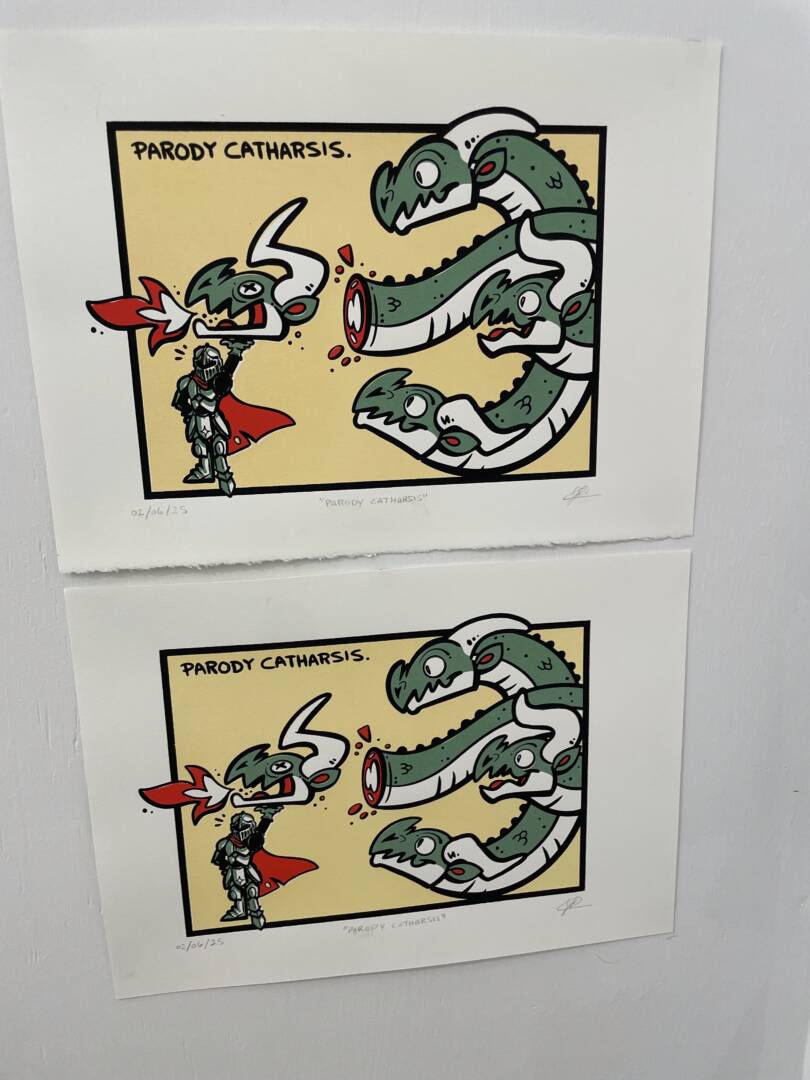
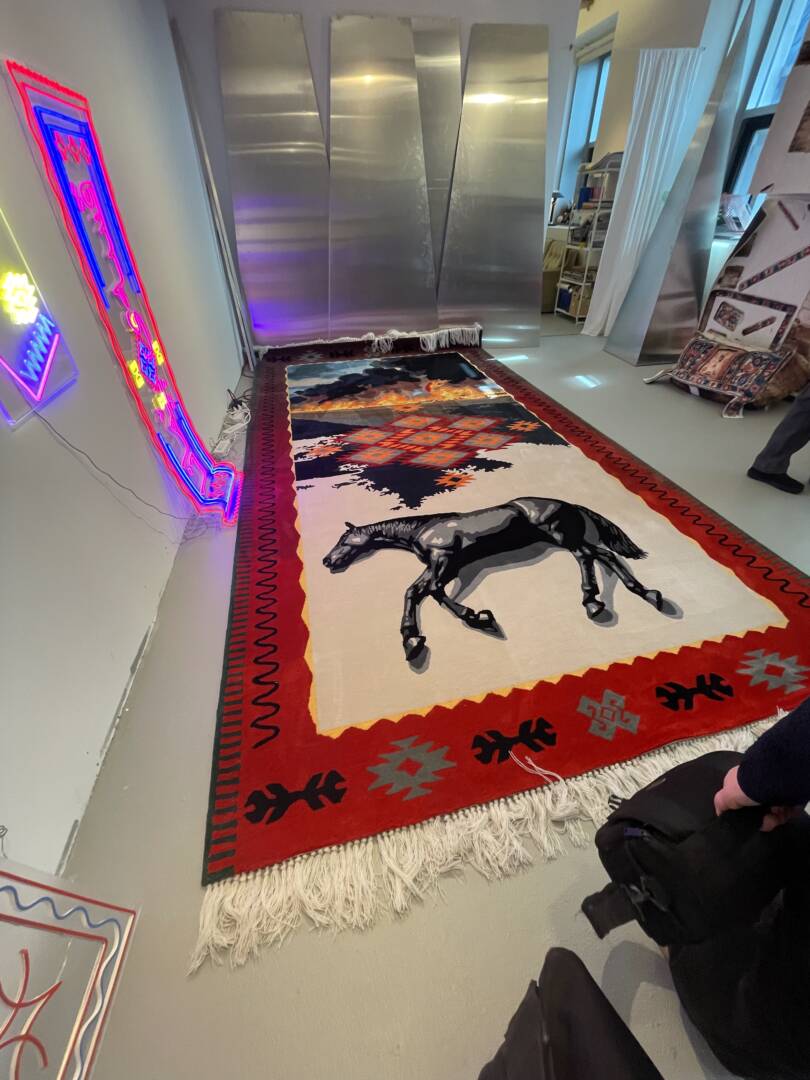

AUDIO ASSIGNMENT – 13 Piece Capriccio
BRAINSTORM


PREPARING FOR THE CONCERT
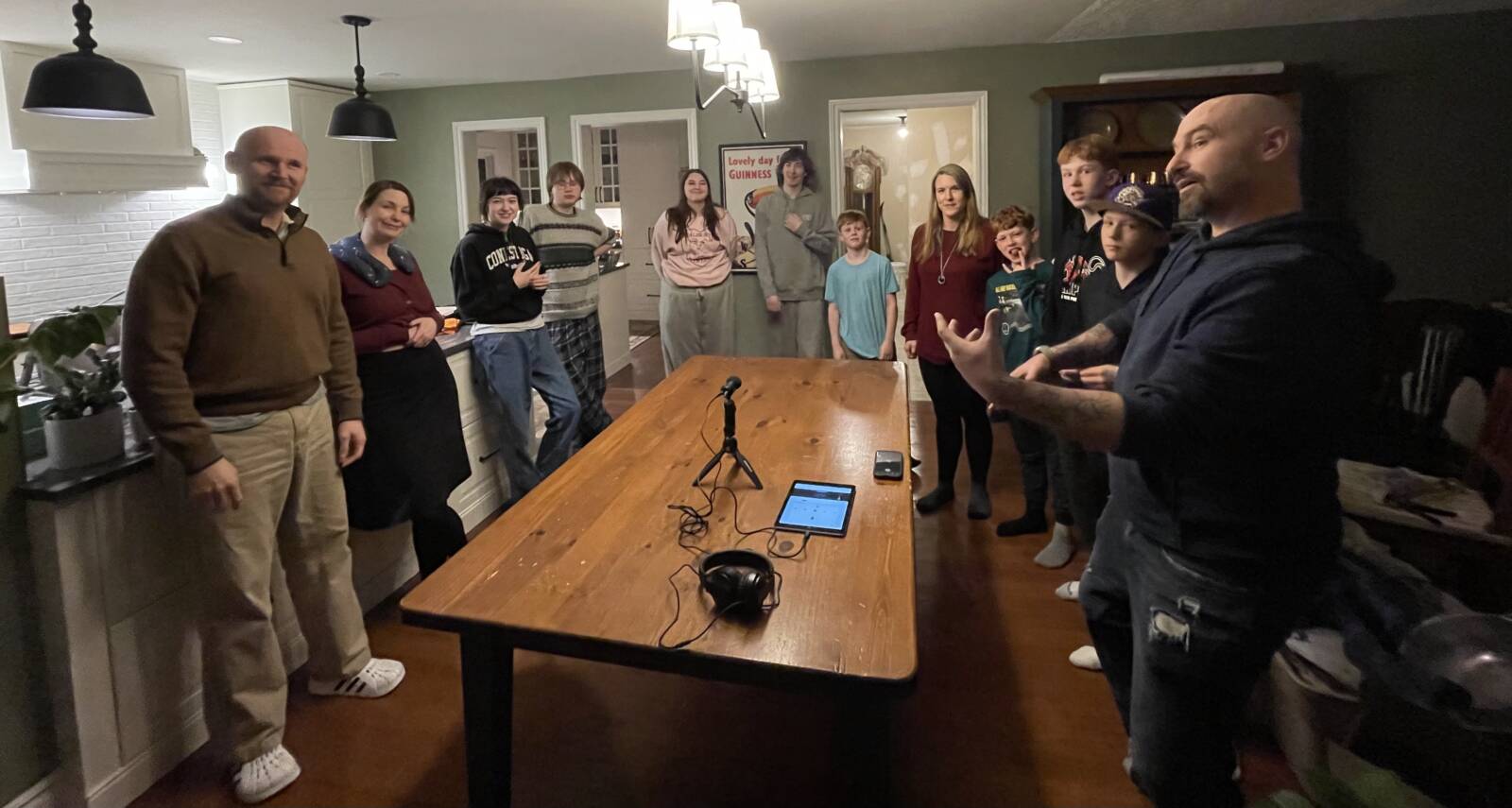
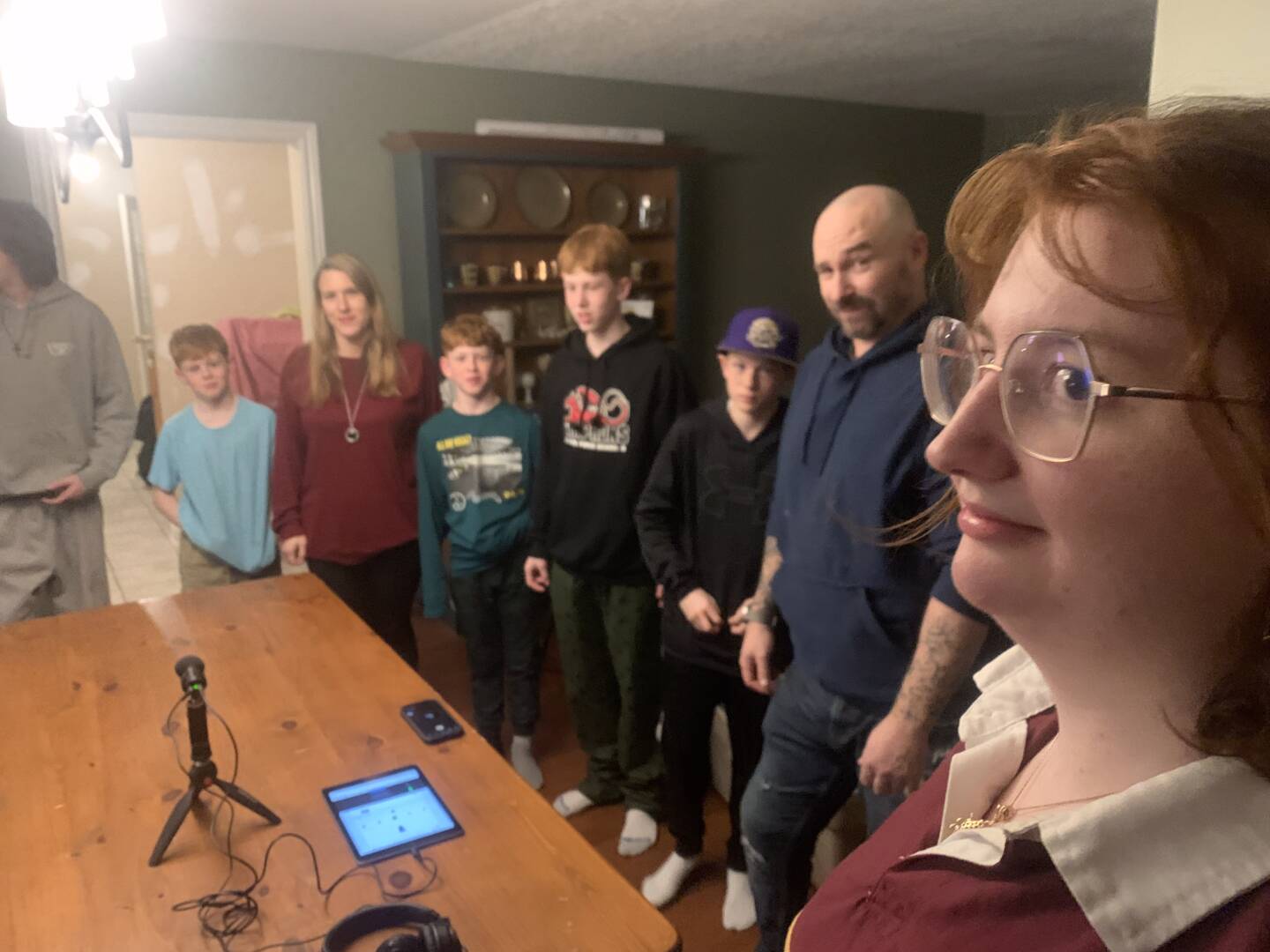
13 Piece Capriccio
BONUS: red belly
Artist Blurb for 13 Piece Capriccio:
My audio piece is a capriccio created from the sounds of 13 family member’s belly buttons. A capriccio is a lively, spontaneous, and sometimes humorous piece of music. One of my strangest stims, patting my belly button helps ground me, calms me down, and produces a loud drum like sound. Although it is a little strange, I have an incredibly nonjudgmental family whom I wanted to share this experience with. I invited any family members that lived close by to come over to my house and join me in my belly button drum circle. It was incredibly important to me that participants felt comfortable, playing their bellies however they deemed fit and laughing if they felt the need! The goal of this audio piece was to construct an unscripted musical composition while creating a safe and fun event amongst people I feel comfortable with. The experience itself was a very odd and unique one… looking around the room and seeing 12 other people smacking their bellies in a circle is something I never thought I’d be doing. Although the audio piece was mostly sporadic, I did conduct it to a certain degree as I quieted the group at the beginning and motioned to the group to slow down once we neared the one minute mark. I decided to keep in the murmuring at the beginning to humanize this piece and because it sounds similar to the murmuring that occurs before an orchestra, which ultimately quiets down once the music begins. My uncle (pictured on the right side of the images above) ended off the audio clip with a nice little beat. I am very happy with this piece as I was able to share one of my favourite sounds with the people I love. Every time I listen to this piece and hear the laughter of my family members, I smile 🙂
My Crops Are Dying but My Body Persists
Bridget Moser’s My Crops Are Dying but My Body Persists is an incredibly intimate video piece where Moser shares her experience with identity and existential crisis. As mentioned in Lau’s review, Moser references 2020 pop culture and memes. This is evidenced in her use of satisfying videos, such as the material squishing out of crocs, distorting music, a commonplace practice in “shit posting” videos, and strange yet goofy images, such as the bizarre muscular figure sitting on water. Her music choices also reference modern day “calming” and “Inspirational” soundtracks you could find easily on YouTube. For instance, the upbeat music at the 3 minute and 30 second mark reminds me of inspirational music I may use to ignore the chaos of the world around me while the meditation music at the 12-minute mark reminds me of the music I use to calm myself down, something I do when I am worried about the state of the world. The white, beige, and pastel colour pallet creates this sense of cleanliness. This orchestrated purity is even more off-putting when you combine it with imagery like Moser spitting out her own teeth or putting meat between fake toes.
I agree with Lau’s comment that the fake mouth at the beginning of the video, “delivers a monologue conveying existential dread (…) [which] ironically grapples with the malaise of being a body in the world”, as I had a similar thought that by disconnecting the body part, a mouth, from its source and using a robotic voice with no emotion it contradicts the human experiences it talks about, such as when the mouth says, “I take showers just to pass the time”. I also enjoyed Moser’s commentary on forming connections. As Lau highlights, Moser “awkwardly mounts the sofa’s back, caresses its dusty-rose velour, and balances atop it, trying to feel something”. This scene not only made me uncomfortable, but it made me feel exhausted as I could image how tiresome it would be to wiggle around that couch with such effort; Moser even begins to pant and breathe heavily. Another example of the inability or difficulty of forming connections is seen in the scene where Moser uses a fake hand, made of hot dogs, to touch a fake dog.
Moser’s phallic symbolism could be used to comment on connection in a more intimate manner, such as the scene where she touches a screen with an image of hot dogs and roses, runs away, then returns. Touching the screen, she forms a connection, while running away looking at her hand may suggest it is a connection she is not proud of or comfortable with. However, as she continuously returns to touch the screen again, this scene may be even more distressing symbolizing some form of addiction. Moser also comments on white fragility as Lau notes she delivers “a sly visual joke on white fragility (…) [by sticking] Band-Aids to the crusts of a slice of white bread”. Another scene that highlights this topic is when Moser lays on a white couch in a white room while hugging bread, getting comfort from her white privilege. However, her comfort is taken away as she sees a human figure stripped of its skin. This could be Moser’s confrontation with the things within herself she finds uncomfortable.
The quotes “I don’t know what I am feeling but I am feeling something” and “throw up and go on” stuck out to me the most as they beautifully explain the human experience, at least for me personally. These quotes highlight the confusion of being alive in a dying world and the perseverance to continue.





ONE FEAT THREE WAYS – PEELING AN ORANGE
BRAINSTORM



FILMING
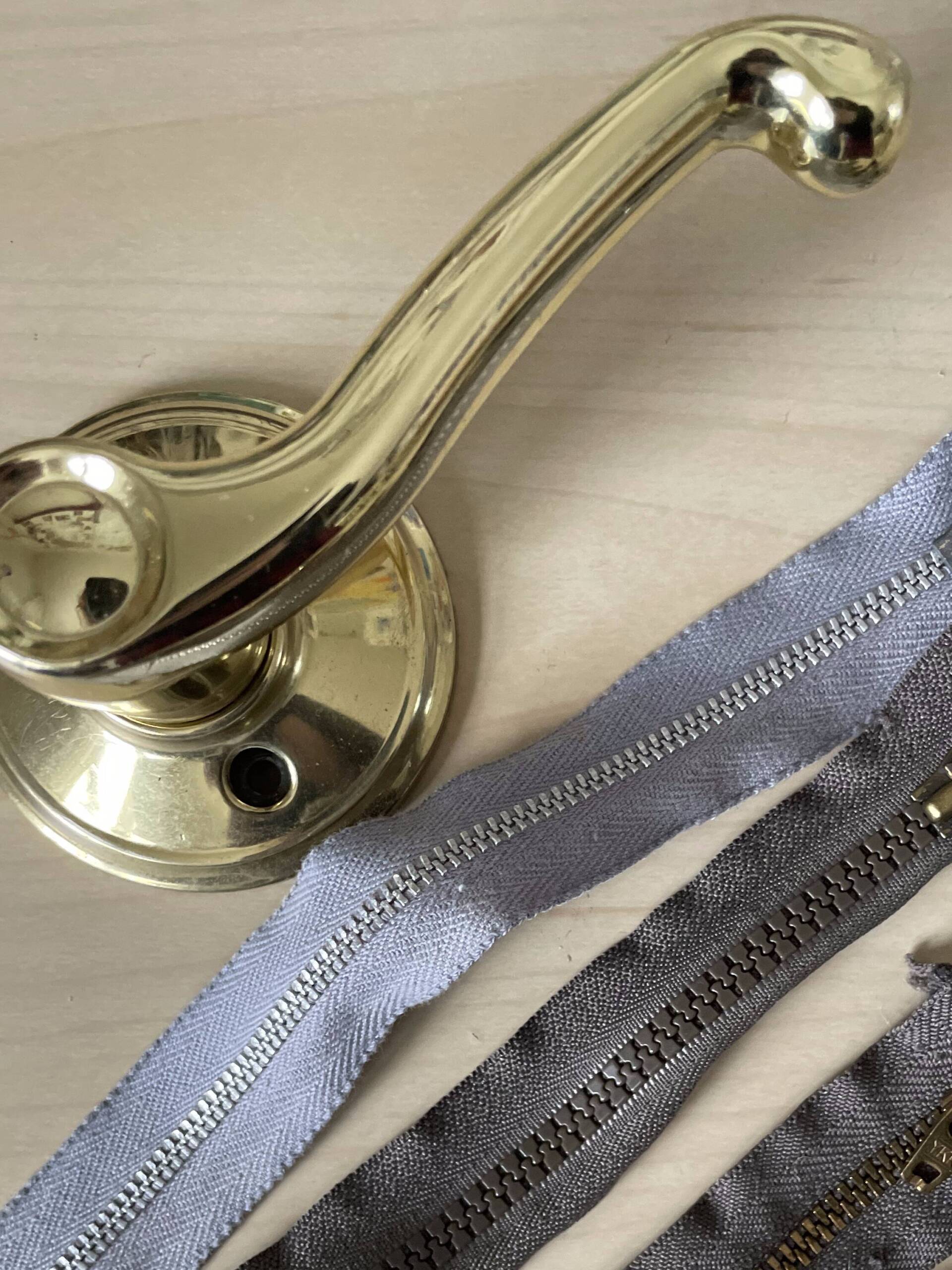

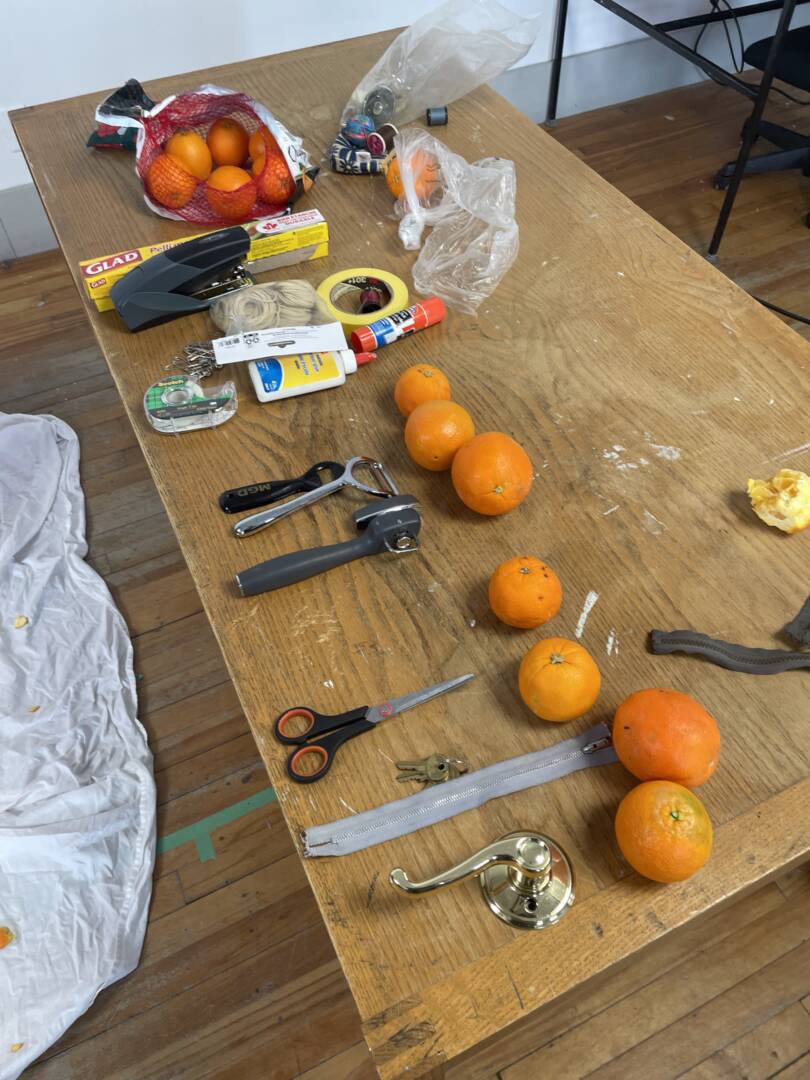
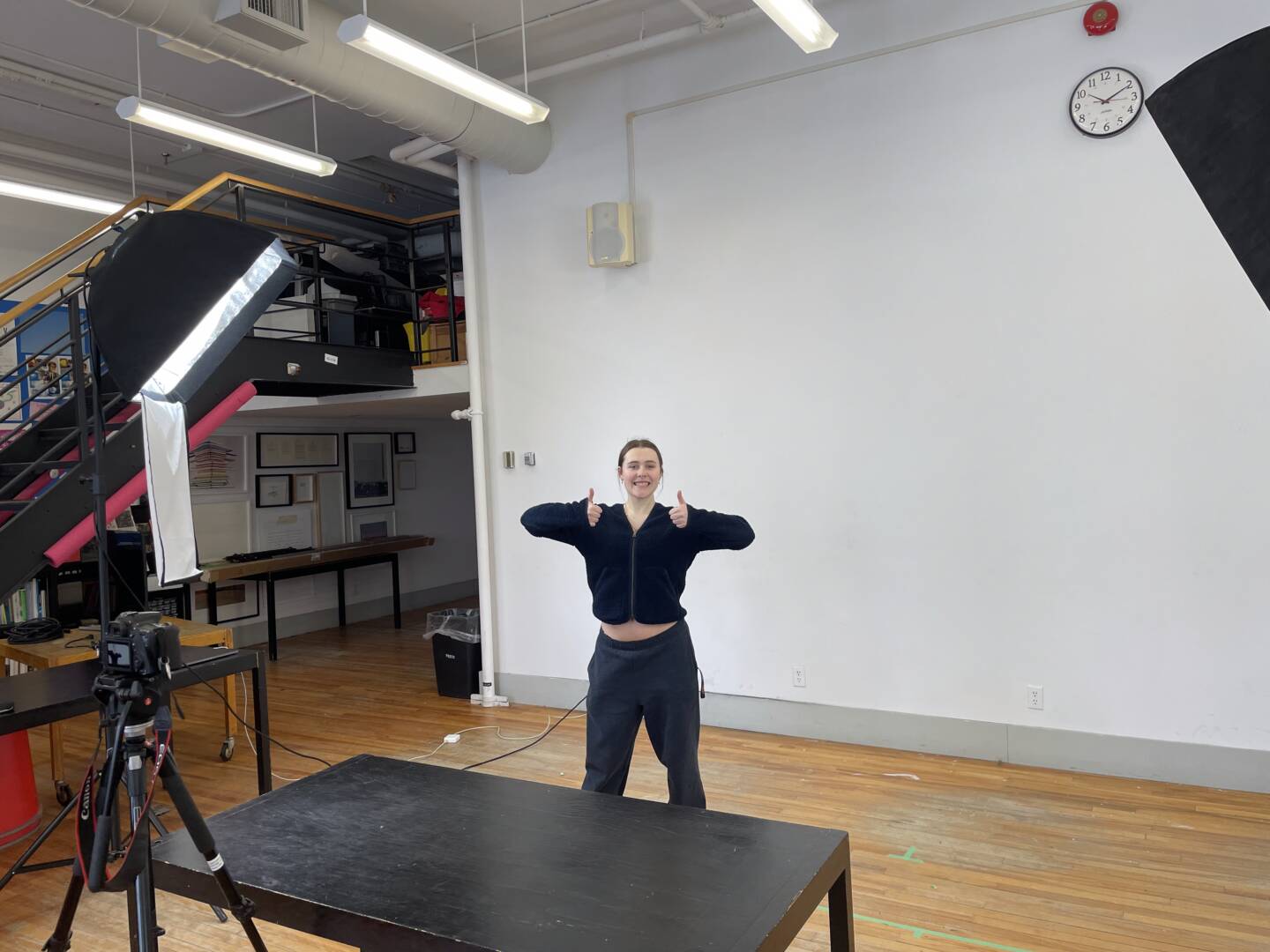

29 (One shot)
Openers Opening (Edited)
Over and Over (Loop)
Artist Blurb for “One Feat Three Ways”:
Our feat was peeling an orange. Our three videos are entitled 29, Openers Opening, and Over and Over. Being the complementary colour to orange, we both wore blue to help make the focus of our videos stand out more. We spent three hours playing around with different ideas and items, some of which translated better into video format. By the end of filming, our hands were stained yellow and the whole room smelled like citrus. In opposition to those who try to peel an orange in one piece, we attempted to peel an orange in many small pieces in our video 29. To make it extra challenging, and a bit more intriguing, we attempted this feat using our teeth! Both Mckenna and I attempted this feat but we decided to use Mckenna’s version as one of our three final videos. In Openers Opening Mckenna and I use implements that open other things (handles open doors, zippers open clothes, Bottle openers open bottles) to see if they could open something unfamiliar, an orange. This video got REAL messy as most things are not great implements for opening oranges… In Over and Over we thought it would be fun if one person peeled an orange while the other tried to put it back together, creating this endless loop of opening then closing then opening. Originally planning to sit on the rolling office chairs, we decided to use the red chairs instead to ensure we did not move around during the video and mess up the loop!
AGO: HIP-HOP EXHIBITION
I was very excited to see the Hip-Hop exhibition at the AGO because last year in my sociology class we watched “Hip-Hop: Beyond Beats and Rhymes”, a documentary that detailed how toxic masculinity is promoted in the Hip-Hop industry and the system, run mainly by white men, typically only support black artists that perform these harmful stereotypes. A few pieces that really stuck out to me were Ride or Die by Gajin Fujita, Platano Pride by Miguel Luciano, and Nina Chanel Abney’s Untitled piece. Ride or Die drew my attention because it struck me as unusual to see graffiti in a gallery setting. The use of actual spray paint and overlapping designs made it feel like it was taken right from a concrete wall outside! I am not a big fan of the graffiti aesthetic and often ignore it in public, however, I found myself drawn to this piece. When something is given a platform, it is usually taken more seriously. Platano Pride caught my eye because you don’t see a large golden banana every day! In my sociology class, we also discussed the mistreatment of plantation workers. It was really empowering to see an artwork where a community reclaimed this symbol. Lastly, I adored Nina Chanel Abney’s Untitled work! The documentary, “Hip-Hop: Beyond Beats and Rhymes”, talked a lot about what is commonly valued and portrayed in Hip-Hop lyrics and music videos… money, babes, and cars! I love how the crudeness of the subject matter is reflected in the material being used, which seems to be harshly cut up crafting paper. This may have been my favourite piece in the AGO.
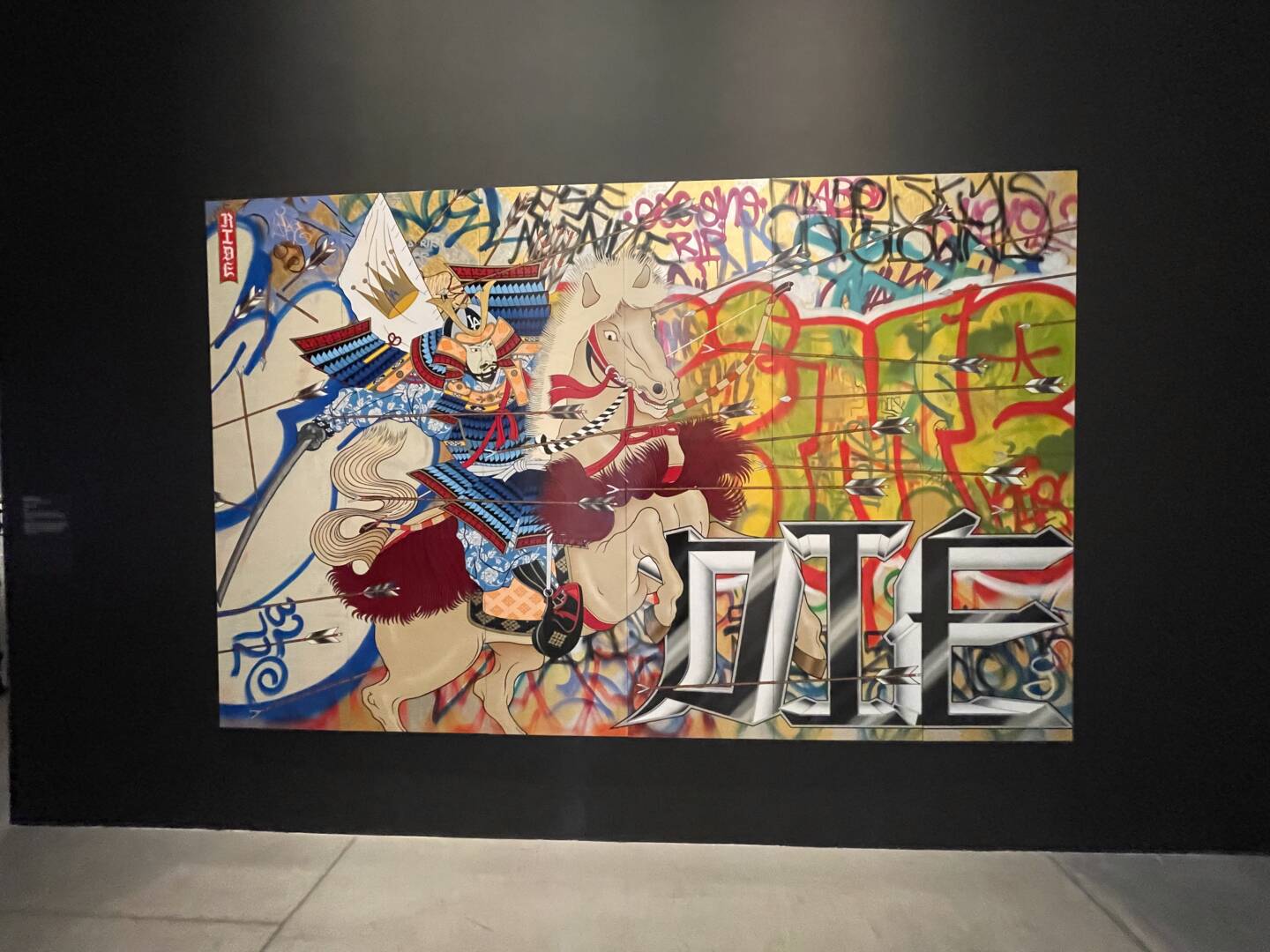
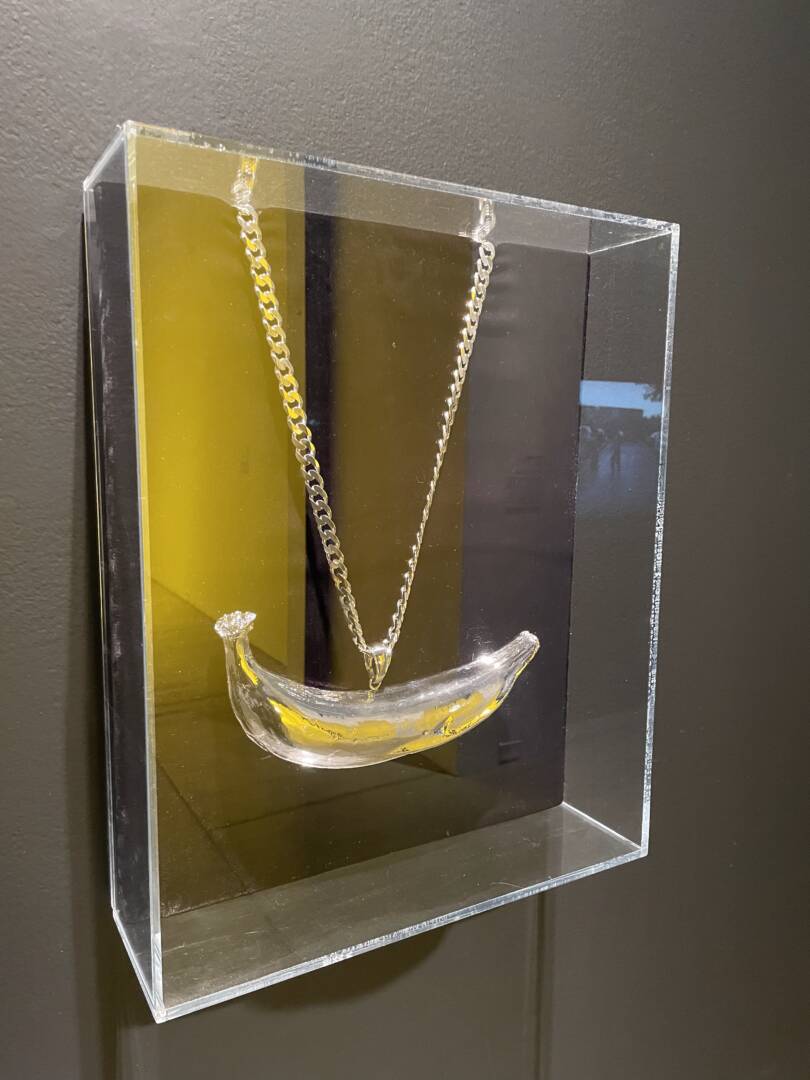
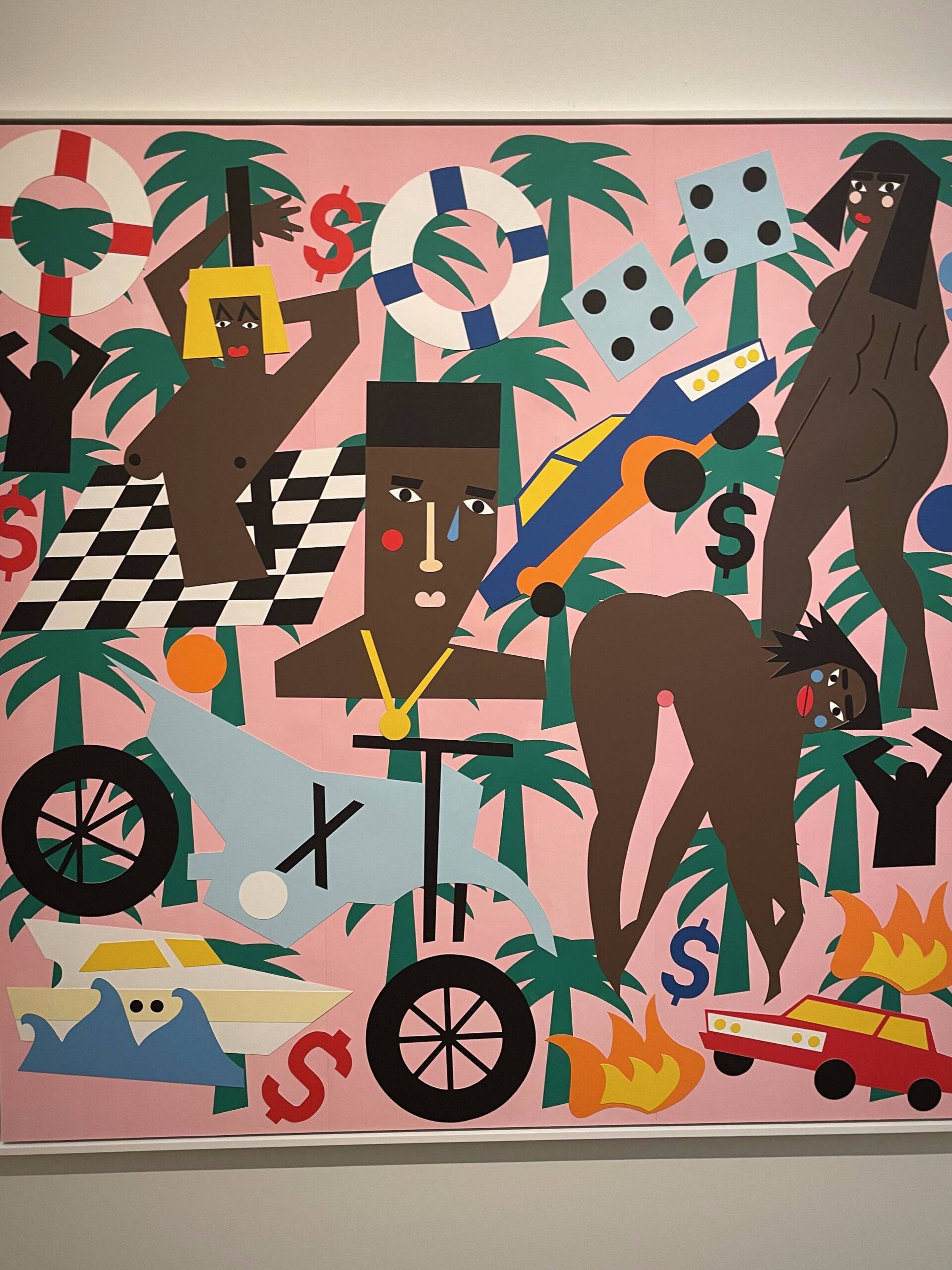
POWER PLANT
The Power Plant gave me an experience I was not expecting. I first watched the Floating Sea Palace by Lap-See Lam and I swear I fell into a trance. I had absolutely no idea what was going on except that there was a fish man… but I loved it! The translucent screen that was being projected on produced an incredible effect as shadows were cast on the wall behind it, giving the video literal depth! It was interesting too that the story was from a culture I am not accustomed to making it completely foreign to me. The immersive story and audio paired with the dark room and cozy bean bag chairs allows one to turn off their mind and just experience. Overall, the 26-minute video went by quicker than expected and I made my way to the second exhibit, How Many Colours Has the Sea by Charles Campbell. My favourite part of this exhibit was the audio piece that made me tear up a tad bit. I have never cried at an art gallery before… first time for everything I suppose. The piece was about loss and allowing yourself to sit with those feelings then let it go. Campbell gave me a space to contemplate the loss of someone close to me, and although I am not fully over it, this piece made me feel a bit better.
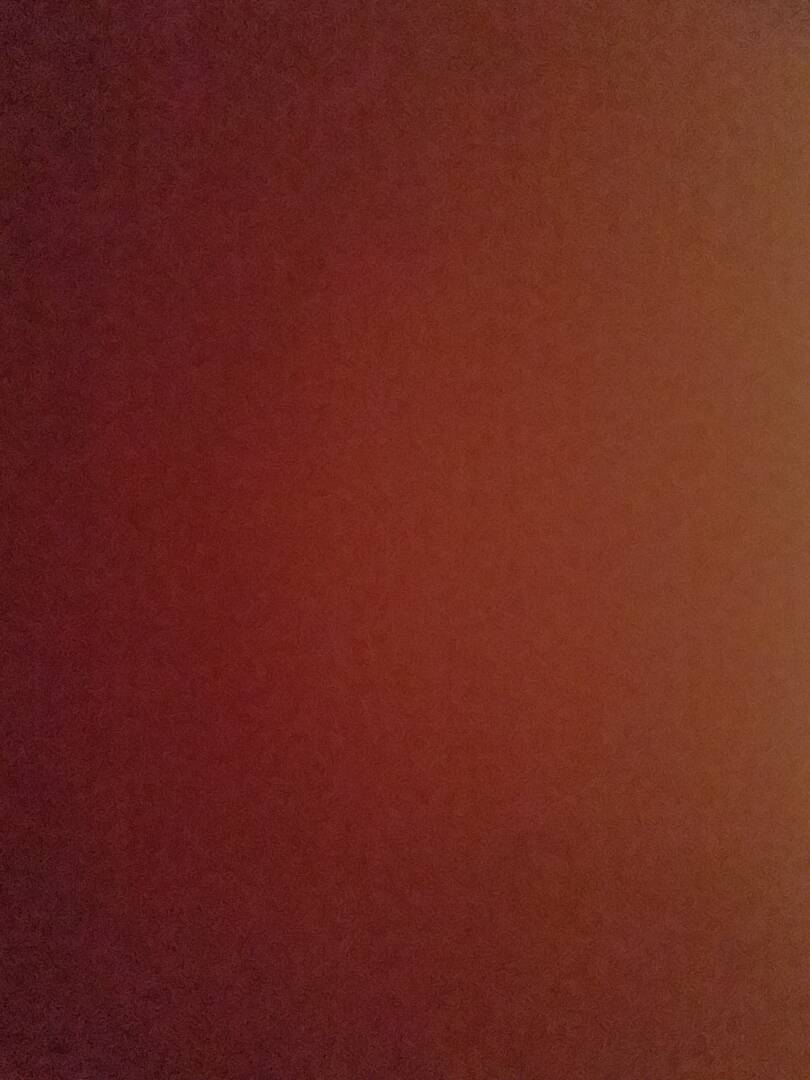
Took this picture of my finger while at the AGO by accident and later I couldn’t figure out what art piece it was…
Motus Mori Reading Questions
Question 1)
Heitmann’s collection of donated mannerisms are preserved through 10 dancers as they interview, mimic, memorize, then perform other people’s movements. This project has no end date and is an attempt to ensure the mannerisms of people who will eventually pass away stay alive and remembered. Heitmann believes everyone has at least one unique gesture as no two bodies move exactly the same. The donators are of all ages and their motions range from small to large. Once memorized, the dancers perform the movements in dance instillations for the public. One challenge of this project includes the dancer’s capacity to remember as some of them may eventually forget or unintentionally alter someone else’s motion. Another challenge is that those who donate their motions tend to want to “sit up straighter than usual or perform an ideal version of one’s self” while being monitored, changing their normal movements. The unique gift this project produces is a new form of documenting human kind. Rather than focusing on preserving text, physical art, music, or artifacts, this project provides a new way of thinking about and preserving an aspect of human culture that is often brushed off as not being important.
Question 2)
Both Mahat Arab and Ranti Tjan stood out to me because I relate to them. Recently I have started cracking my knuckles as a way to calm myself down, a practice that I only recently started doing and used to gross me out when others did it. I find it interesting that this mannerism is a newly developed one that, like Arab, stems from anxiety. As for Tjan, they realized that they arrange their body in ways that take up less space. I have always felt like a large person, I am quite tall and have broad shoulders. This used to make me feel very uncomfortable as a teenager and I adapted ways to “shrink” my body when in public so I would appear smaller and take up less space. I would sit with my legs touching each other, hold my arms in close to my body, and stand in a contrapposto position to lower my height.
Question 3)
My mom yawns dramatically and vocally when she is anxious… something I notice the most when her own mom comes to visit. This yawn is distinctive from her normal yawns as she really emphasizes it to the point where it seems fake, mainly because it is. I have noticed myself sometimes taking on this behaviour when I am around people I don’t know well or if there is silence in the room.
My brother sways his arms at his sides and looks up at the ceiling when he wants to hangout with me or wants me to do something for him. He will stand at my door and do this movement and I will know he wants something from me. This motion paired with the averted gaze tells me all I need to know about what he is thinking. His long arms really exaggerate this motion.
My dad has a very specific and goofy dance he does whenever he wants to embarrass my mom. He wiggles his hips in two quick and sharp movements and usually sports a giant grin while he does it. My brother and I mock this movement from time to time when we hear certain songs that remind us of him. This small goofy movement is seared into my brain and I will continue performing it, similar to Heitmann’s dancers, so that I may never forget it.
KILOMETRE PROJECT
BRAINSTORM
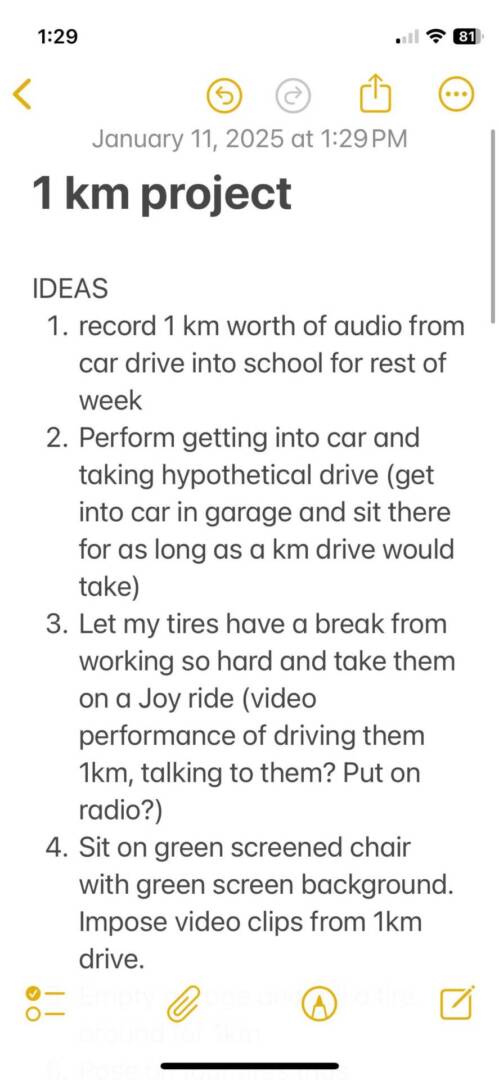

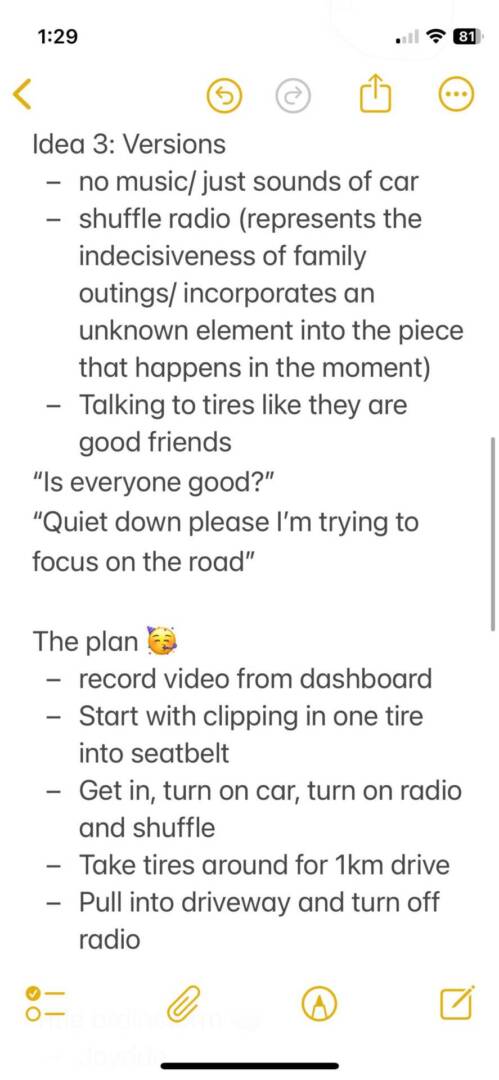
MAPPING OUT THE ROUTE
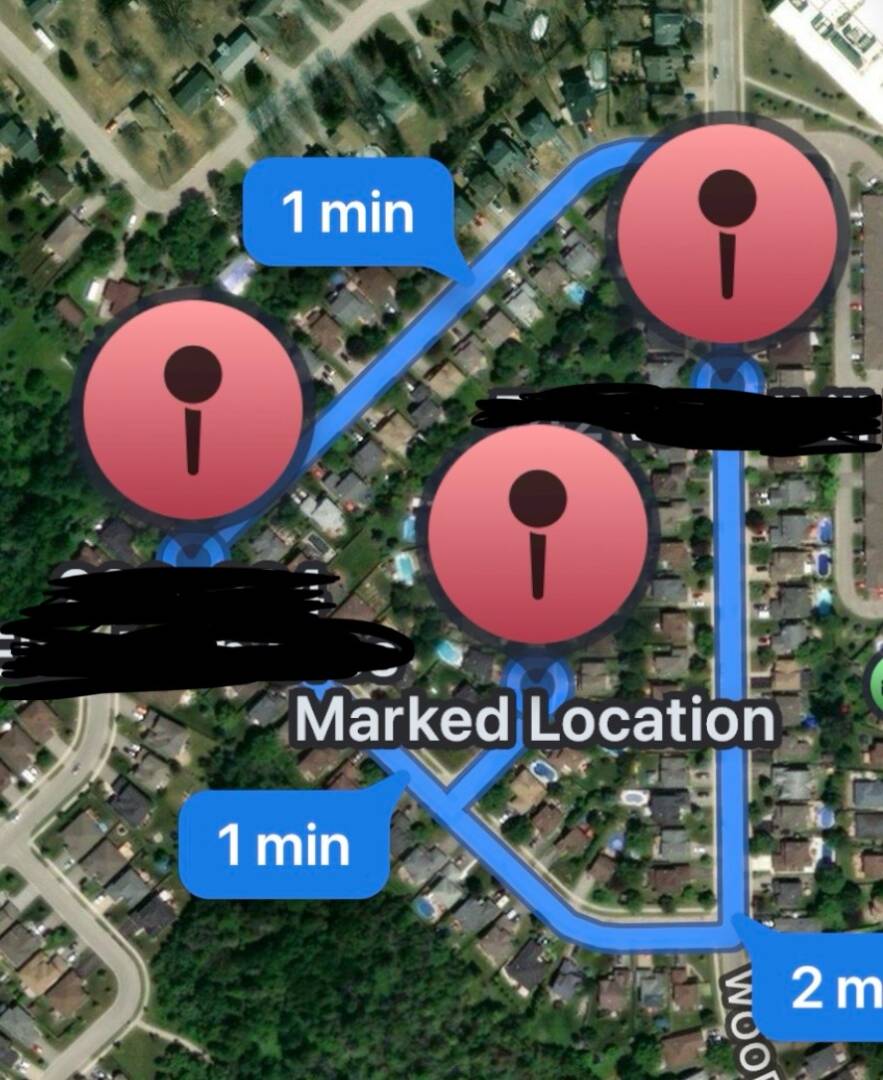
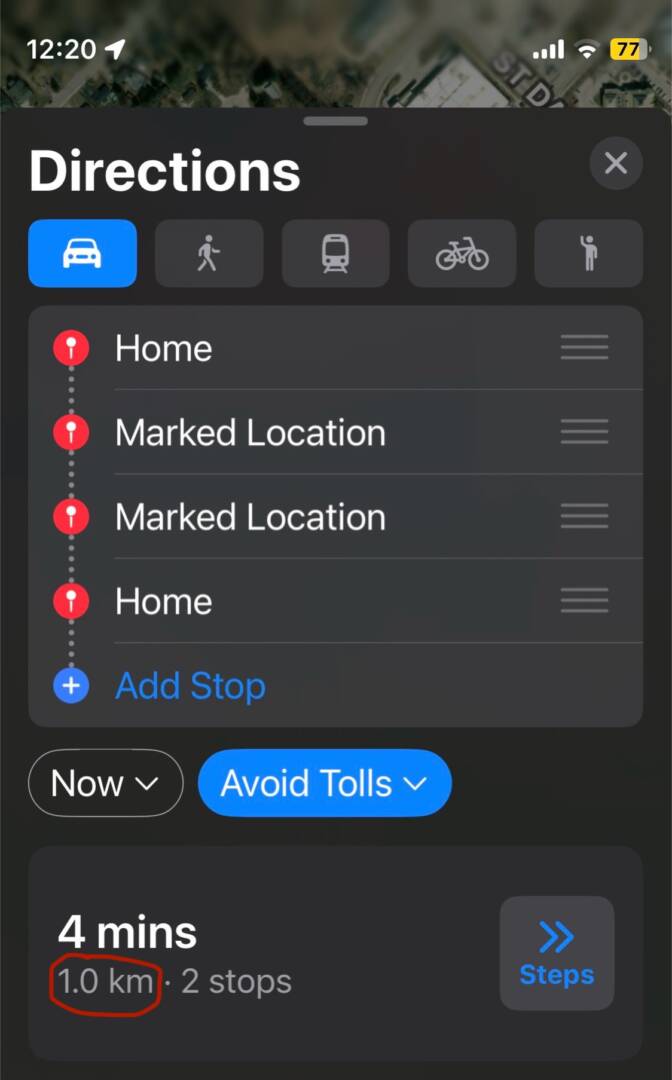
– Off for the Season –
Artist blurb:
I wanted to create a piece with some humour so I decided to give my tires a much needed break and take them for a joyride. I took them on a scenic drive exactly 1km from my house and back. Always being on the ground, I thought it was time they had a proper view. Being summer tires, they are off for the season both literally and figuratively. I shuffled the radio to represent the indecisiveness of family outings (not knowing what radio station to listen to, where to eat, where to go). The radio also incorporates an unknown element into the piece as it is randomized and I have no say in what is played next.

The gang’s all here 🙂
